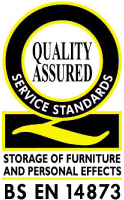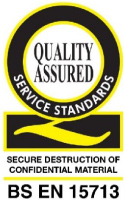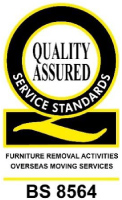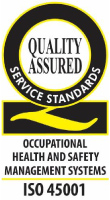If you’re welcoming spring by starting your own mini green revolution at home, here are some simple ways to save money and help save the planet.
- Roll With It
The average, four-person household uses 1.1 toilet rolls per day. Have you ever checked to see how green your loo rolls are? There are now a number of eco-friendly brands using recycled paper or even bamboo.
- Big Butts
Rather than using water from the mains, collecting water in water butts can drastically help prevent the depletion of our reservoirs. Simply by harnessing rainwater, you can make your garden even greener and save money if you’re on a water metre.
- Bang Up To Date
Older appliances tend to be less efficient, meaning greater fuel consumption and greater fuel costs. Is it time you upgraded your old machines?
- Wrap It Up
Poor insulation is one of the greatest causes of heat loss in our homes. Lag pipes, insulate drafty rooms and loft spaces, even stopping drafts will improve your home’s energy performance.
- Make It A Double
Ridding your home of single glazing and switching to double glazing (even secondary glazing) can reduce heat loss and bills.
- Have A Refill
Refill shops are cropping up everywhere. As well as organic, sustainably sourced staples like dried foods, all with zero packaging, you’ll often find other eco-alternatives on offer, such as cleaning supplies and beauty products.
- Bulk Up
If you can’t find a refill shop, buy in bulk, larger containers means less packaging waste and lower costs.
- Add Some Greenery
House plants like bromeliads remove over 80% of nasties from the air, and they look good. Plants have also been shown to reduce anxiety and depression.
- Say Goodbye to Greetings Cards
The UK sends over 800,000,000 greeting cards every year! The environmental impact from the production, waste and transportation of cards to our homes, has led to more and more families ditching traditional cards and finding other ways to send the love. Why not shoot a fun Tik-Tok style video instead?
- Who Ya Gonna Call?
Haunted houses have been recorded since at least 1 AD. The politician/writer/lawyer Pliny The Younger wrote of spectral visits at his home from an old man with a long white beard.
- No Really… Call!
In some US states it is illegal to sell a home you suspect is haunted without letting the buyer know. Failure to do so can result in the transaction being reversed.
And our American cousins takes their ghosts seriously, in a poll by Cinch Home Services 1 in 10 Americans admitted to having ‘sold their home due to a paranormal experience’.
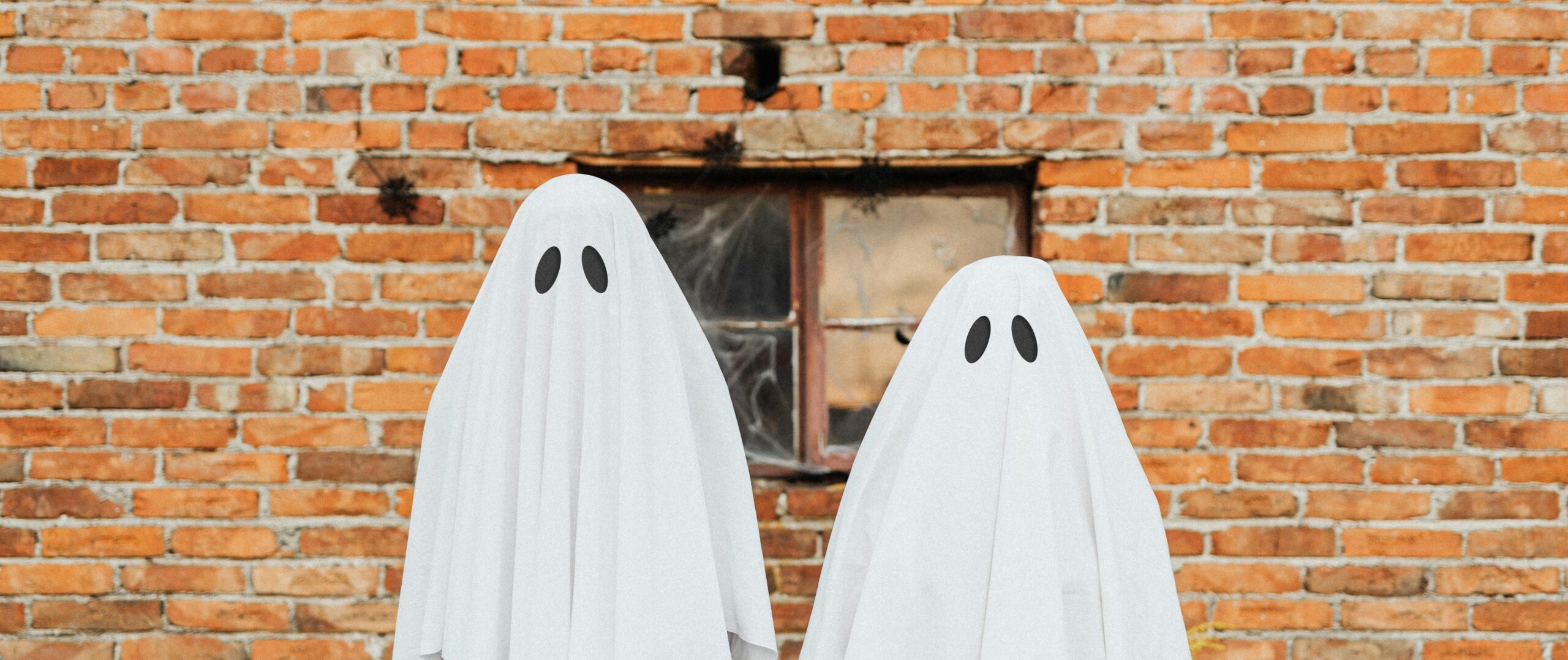
- Taxman
Taxation, it’s as old as houses. Land/property taxes have been traced back as far as 5,000 B.C. in ancient Egypt.
- A Bit Brit-culiar
Houses in the UK are different to our continental cousins in many ways. Most UK power sockets have on/off switches, worldwide, most power sockets have no switch. Our windows open outwards. Across much of Europe, windows open inwards, this means shutters can remain closed for security, while air can circulate. It’s also easier to clean inward-opening windows.
- How Do UK Homes Measure Up?
Average European home sizes based on total floor area. *
- Cyprus 4m
- Belgium 3m2
- Switzerland 1m2
- Netherlands 7m2
- Sweden 3m2
- Spain 1m2
- UK 0m2
- Germany 3m2
- France 7m2
- Italy 6m2
- Ireland 8m2
- Poland 2m2
- Romania 9m2
- Home vs Forest
UK housing covers nearly as much land as forests.
Land use/coverage*
- Agriculture, fishing & hunting 52%
- Forestry 7.1%
- Residential 5.1%
- Commercial & community services 4.1%
- Heavy industry 3.5%
- Mostly unused 26.4%
Buildings cover an estimated 2.4% of UK land.

- Planted
Not only can house plants help reduce humidity, plants like bromeliads, can remove over 80% of impurities from the air.
- Tree-mendous
A study by Lancaster University found mature trees in gardens by busy roads can reduce air pollution by up to 50% and deaden road noise by 6-10 decibels. Trees have also been found to reduce stress, increase positivity and help speed recovery from illness.
- Ultimate D.I.Y.
Between 1908 to 1940, the famous Sears mail-order catalogue in the US, sold around 75,000 kit build homes. The homes would arrive in pieces and the owner construct their own house.

- Minnie House
Measuring just 182cm wide (5ft 9in), 304cm deep and 312cm (10ft 2in) high, the UK’s smallest house, which is still standing, was built in Conwy, Wales in the 16th century. The little house’s last occupant was 6ft 3in fisherman Robert Jones.
- Minnier House
But that’s huge compared to Warsaw’s Keret House. The world’s thinnest house, it varies between 92cm – 152cm still manages to pack in a bathroom, kitchen, bedroom and dining area.
* Source; National House Building Council NHBCfoundation.org
From Knick Knack Lane to Frying Pan Alley, here’s the facts behind some of the nation’s best-loved byways.
1. Where the Steets Have No Name
Streets are often named after events and people. This provides a rich historical map of towns. Many “Waterloos” appeared after the battle in 1815. Thousands of addresses were named to honour Queen Victoria. England’s 1966 World Cup win and even rock bands have all been immortalised in street names.
2. Street vs Road
What’s the difference? Traditionally, a ‘Street’ was a route found within a town, normally lined on either side by residential or commercial buildings. ‘Road’ was applied when connecting towns/cities, often acting as a signpost, such as London Road or Manchester Road.

3. Jane Lane
Many streets were named after local businesses, Baker Street is where you’d find the baker. Mill Road, Church Lane, Brewers Close all pinpointed local trades. Later, builders started naming streets after themselves, wives or children. Baker Street in London (literary home of Sherlock Holmes) has nothing to do with bread, it was built by William Baker.
4. Pricey Addresses
Street names can help with house prices. Research has found that if you live on Pear Tree Lane your property is more likely to attract a higher price than a similar property on Crotch Lane.
5. Name Game
Planners and developers have got wise to this. Flower and tree names are increasingly common on new streets. The use of ‘Lane’, ‘Way’ and ‘Mews’ are also carefully applied to help increase desirability and prices.

6. The Lane
During the reign of King Henry I, a London ‘Street’ had to be both paved and wide enough for sixteen knights to ride abreast. A ‘Lane’ had only to be wide enough for beer barrel to be rolled along, this at a time when beer was more sanitised and safer to drink than water.
7. Fanny Avenue
Bad street names are still a cause for concern. According to the Royal Mail, in 2016 494 routes were renamed, in some cases this was due to confusion of similar sounding streets but more commonly due to petitions from residents over ‘undesirable’ names.
8. A Bit Silly
Some quirky names have become a source of local pride, including;
Silly Lane – Forest of Bowland, Lancashire
Frying Pan Alley – Spitalfields, London
Christmas Pie Avenue – Flexford, Surrey
Knick Knack Lane – Brixham, Devon
Ghost House Lane – Chilwell, Nottingham
Whip-Ma-Whop-Ma-Gate – York

9. Nasty Names
Other less fortunate locales include;
St. Gregory’s Back Alley – Norwich
Hornyold Road – Malvern
Backside Lane – Doncaster
Bell End – Rowley Regis
Arguments Yard – Whitby
Fanny Street – Cardiff
10. A Bit Arty
Some planners and councils have shown an artistic side. After a plaque was unveiled at Dartford Railway Station on the platform where Rolling Stones Mick Jagger and Keith Richards first met, the local council joined in by naming new roads; Ruby Tuesday Drive, Angie Mews, Sympathy Vale, Cloud Close and Lady Jane Place.
11. Oops!
But being cool doesn’t always go down well, Milton Keynes got things very wrong when they started naming streets after entertainment icons. Jimi Hendrix, Bob Marley, Freddie Mercury, Marylin Monroe were just some of those honoured at a new estate. Residents were less than impressed as the estate was also close to Crownhill Crematorium. The combination of dead stars and passing funeral traffic soon led the area to be nicknamed “Stiffs Estate”.
And how to avoid them!
Mistakes when moving house don’t just slow the process down, they can be costly! But most potential pitfalls can easily be avoided with some simple planning and preparation.
1 Get A Survey
A removals survey isn’t just about giving you a price, an experienced surveyor will look at all the potential problems to ensure your move goes as smoothly as possible on the day. He’ll look for overhanging trees or tight entrances, parking/access, outbuildings, any special items that will need care. Always get a survey from a reputable removals company.
2 Get Your Own Insurance
With hundreds of items to be moved, accidents can happen. If you’re moving all your worldly possessions, it’s vital you make sure you have adequate insurance. Your removals company should have some cover in place (ask for exact details), but it might not protect everything or mitigate against mistakes/accidents you or your own helpers might make.
3 Use A BAR Member Company
The British Association of Removers is “the trade association for removal and storage services in the UK”. Members adhere to a strict code of conduct ensuring high standards of customer care, properly trained staff, ethical and eco considerate practises and offers you a higher level of financial security. We always recommend using a BAR member.
4 Don’t Overpack Boxes
“Yep, I can lift that” …. Crash! Firstly, you don’t want to be struggling with overly heavy boxes. It might feel like a good workout in the morning, but halfway through unloading, on a hot July afternoon… Not so much. Secondly, tape and cardboard have a finite load strength. To avoid problems, pack each box to a manageable weight load.
5 Label Your Boxes
It might seem obvious but it’s surprising how differently people do it. The best system is to clearly label each box according to which room it should go to (for your removals team) and to list what’s inside (for you to locate things later). Number bedrooms and corresponding boxes (“Bedroom 1”) and put a number on each bedroom door for the removals team who won’t know the layout of your property.
6 Declutter
That ever-growing mountain of “stuff” in the spare room/shed/loft you’ve been promising to sort out for months/years… Why take it all with you? If you didn’t need it in the old house, do you really want it in your new one? Moving home is the perfect chance to declutter. It also means less to unpack/find space for at the other end. And you don’t want to pay to move items you no longer need or want.
7 Measure, Measure, Measure
If you’re checking for curtains, furniture access, make sure you measure twice (like your old woodwork teacher said, “Measure twice, move once!”). You don’t want to move/buy furniture that won’t fit in the space you want, or worse, can’t fit through the door (and yes, we’ve seen many beds that won’t make it up narrow stairways).
8 Don’t Do It All Yourself
If you’re moving a small property, that has easy parking and have plenty of help on hand then yes, moving can be a relatively easy process… Until you try and shift that sofa up a small staircase. Trained removals men with years of expertise will spot all the potential problems and know how to work around them. They’re also experienced at getting the job done quickly and safely.
9 Don’t Store It In The Loft
Storing already packed boxes out the way is a good idea. Garages and dry outbuildings are perfect to store items and create space inside. But the loft is a definite no-go. Some removals companies aren’t insured to enter loft spaces. Manoeuvring large boxes through loft hatches can also be tough on the back and time consuming.
10 Don’t Leave It Until The Last Minute
“There’s no rush…” Well, maybe not yet, but you don’t want to be rushing at the last minute, that’s when things go wrong. Start planning your removals and packing with plenty of time. The same goes for booking your removals team, like any industry, there are peak periods when removals dates can be hard to come by, so book as early as you can. You might be able to pay a deposit to secure your dates and then switch dates nearer the time if needed, ask your removals company for terms.
11 Pack A ‘Survival Kit’
Have a bag ready for the day. It should contain a printout of all the vital paperwork, phone charger, any required medication, water, snacks and some basic tools (screwdrivers, allen/hex keys, knife, packing tape, tape measure). Also take lightbulbs, a surprising number of homeowners take all the lightbulbs with them.
12 Don’t Do It On The Cheap
Booking the cheapest removals company might seem like a great saving but would you employ the cheapest company to fix your car’s brakes? With so many of your personal possessions on the move, make sure you find the ‘right’ removals company for you, rather than the cheapest. It’ll prove worth it in the end.
13 Cover Floors
There’ll be dozens of trips made by boots carrying heavy objects. Speak to your removals company/surveyor about the best type of floor protection and if it’s included.
14 Do Your Research
If you can get a recommendation for a removals company, that’s a great starting point. But take time to check them out online. Are they a member of the BAR? What are people saying about them on independent review sites like Trustpilot and Which?
15 Book Your First Shop
You probably won’t be able to take all your food, cleaning products, essentials with you and you don’t need the added hassle of a supermarket sweep. So do an online shop for the essential to be delivered the first morning in your new home.
Think your bathroom is too small or your kitchen doesn’t measure up? See how your home compares to UK averages.
1 | Size Matters
The average British UK back garden is 15-metres long, the average living room is 17.09m², and the average kitchen is 13.44m². The average number of members per household is 2.3.
2 | Work In Progress
45% of all UK homeowners consider theirs to be a “work in progress”. Just 22% are happy with their home the way it is.
3 | ‘ow Much?!?
In a lifetime the average homeowner will spend £36,000 on decorating. According to research homeowners spend on average 104 hours each year decorating and 493 hours per year cleaning.

4 | Doing It Yourself
15% of homeowners decorate at least one room every year. 10% of people leave it ten years between decorating. When it comes to choosing colours, 47% of women make the design decisions compared to just 37% of men. 28% of us admit to pinching design ideas from a friend’s house.
5 | Tree Me Up!
Trees add value. Homes with mature trees self for around 25% more than similar homes without trees. While houses on avenues lined with trees fetch a higher price than matching homes on tree-less streets.
6 | Car-buncle
Back in 2021 the RAC estimated that of the 11,000,000 garages attached to UK homes, less than half are actually used to store a car.

7 | Colour My World
Upset that your neighbour has just painted their house Barbie pink? Don’t be, according to Home Owners Alliance, homes on brightly coloured streets can sell for anywhere between 2% and 65% more than less colourful streets in the same area.
8 | Tight Fit
Small gardens are one of the 10 most common factors given for wanting to move home. Other top reasons include changing jobs, increased family size and kids leaving home.
9 | Moving On Up
The average distance of a UK house move is 9 miles.
10 | Keep Moving
The average Brit moves home 8 times in their lifetime.
Average UK Property Sizes
Here’s a complete guide to average sizes/features of UK property;
- The average home has 2.95 bedrooms.
- With 2.3 members per home.
- The average garden is 15-metres in length.
- The master bedroom covers 13.37m² on average.
- The average kitchen is 13.44m².
- The average number of cars per household is 1.2.
Flats/Apartments
- Overall size; 199m²
- Number of bedrooms; 1 – 2
Bungalows
- Overall size; 252m²
- Number of bedrooms; 1 – 2
Terraced Houses
- Overall size; 375m²
- Number of bedrooms; 2 – 3
Semi-detached Homes
- Overall size; 315m²
- Number of bedrooms; 3
Detached Homes
- Overall size; 482m²
- Number of bedrooms; 4
On average UK households spend…
- 104 hours a year redecorating
- 493 hours a year cleaning
From loft conversions to new windows, here’s a complete guide to when and where permission is required.
Please note; all information was correct at the time of writing, however you should always check with your local planning authority before making any major changes to your home.

1 – Replacement Doors & Windows
In most cases you won’t need planning permission to change or replace doors and windows of your home as long as they don’t change the overall appearance (excluding colours and style).
Building Regulations
All new glazing and external doors must comply with building regulations.
Bay Windows
- If you’re replacing an existing bay window you don’t need planning permission.
- If you’re adding a bay window to the side or back of your property, in most cases, you don’t need planning permission.
- If you’re adding a bay window to the front of your property, you DO need planning permission.
Building Regulations
Any new/replacement glazing and structural changes must comply with building regulations.
Dormer Windows
- In general, dormer windows at the back of your property are allowed within ‘permitted developments’ but it’s always best to check with your local authority.
- Dormer windows at the front of your property will require planning permission.
Building Regulations
As a dormer may require external structural changes, building regulations must be adhered to. Any new glazing used must also meet building regs.
New Windows
Planning permission is not required for adding a new window or door opening to the side of your property, however any window must be obscured glass in a non-opening frame.
Building Regulations
The window housing and glass must comply with building regulations, this may require structural changes such as adding a lintel.
2 – Porches
Any new porch must not;
- Obstruct a highway including pavements and pathways.
- Exceed 3 metres in height.
- The floor must not exceed 3m².
- Be located closer than 2 metres to any boundary or highway, including pavements and pathways.
To exceed those limits, such as distance to the nearest pavement/road, you will need planning permission. In most cases, for a simple porch structure this is a fairly straight forward process.
Building Regulations
- Any glazing (windows and doors) and electrics must comply with building regulations.
- The original entrance/door must remain in place.
- If the original entrance is ramped or level for disabled access, this must not be adversely affected.

3 – Side Extensions
You don’t need planning permission for a side extension as long as;
- It doesn’t exceed half the width of the original house*.
- It is single storey and no taller than 4 metres.
- Materials used (such as bricks) must match those used in the existing property.
- You cannot build upon more than 50% of your original garden area (including existing outbuildings).
- Eaves cannot exceed 3 metres in height if the extension falls within 2 metres of a boundary.
Building Regulations
There are a number of building regs that must be adhered to including roofing, foundations, any existing drainage, electrics, windows, etc.
4 – Rear Extensions
Planning permission is not required as long as;
- It is single storey with a maximum height of 4 metres.
- Materials used (such as bricks) must match those used in the existing property.
- It has a maximum depth of 3 metres for semi-detached/terraced properties and 4 metres for detached properties.
- Eaves cannot exceed 3 metres in height if the extension falls within 2 metres of a boundary.
- You cannot build upon more than 50% of your original garden area (including existing outbuildings).
If you’re also adding a veranda, you will require planning permission.
Building Regulations
There are a number of building regs that must be adhered to including roofing, foundations, any existing drainage, electrics, windows, etc.

5 – Front Extensions
All front facing extensions require planning permission regardless of size and will need to comply with building regulations.
6 – Conservatories
Conservatories fall under the same category as Rear Extensions.
7 – Converting A Garage
In most cases this falls under ‘permitted development’ and won’t require planning permission, however in cases of changes to the front of your property, you should always check with your local planning authority.
Building Regulations
Windows/glazing, lintels, electrics, etc will all need to comply with building regulations.

8 – Patios & Driveways
Patios and driveways don’t require planning permission.
9 – Sheds & Greenhouses
The basic rule for all outbuildings is, planning permission is not required as long as;
- No more than 50% of the land of the original house* can be covered by additional buildings.
- If the shed/building stands less than 2 metres from one or more boundaries of the property, the overall height should not exceed 2.5 metres.
- Sheds over 2 metres from a boundary cannot exceed 4 metres.
- It cannot extend beyond the sided elevation of your property if it is facing a highway.
- It must be single storey.
- For properties situated inside national parks, AONB’s and World Heritage Sites, any outbuildings being located 20 metres away from the house cannot take up more than 10m².
For anything beyond those restrictions, you will need planning permissions.
Building Regulations
You will need to comply with building regulations if your outbuilding requires;
- Putting in foundations
- Building below ground level
- Adding drainage
- Adding electricity
* Original House
When planning regs refer to the ‘original house’, this applies to properties ‘built on or after July 1st 1948’. If the house was built before then, the ruling applies to how the house existed on that date.
10 – Garages, Offices & Outbuildings
Garages, pool houses, cabins, kennels, workshops, garden offices all fall under the same category as sheds and greenhouses and must comply to the same rules.

11 – Loft Conversions
Under ‘permitted development’ loft conversions do not require planning permission as long as;
- It doesn’t exceed 40 cubic metres in volume for terraced houses or 50 cubic metres for detached, semi-detached houses.
- It doesn’t extend higher than the existing line of your property.
- Materials used must be the same as/similar to those of the existing property.
- Side facing windows must have obscured glass.
- No verandas, balconies or raised platforms (front or rear facing). These WILL require planning permission.
- Side-facing windows to be obscure-glazed.
Building Regulations
You will need to comply with a number of building regulations regarding the pitch of roof, materials, stairways, electrics, plumbing, floor/roof joists, etc.
12 – Cellar & Basement Conversions
You don’t require planning permission as long as;
- You are not creating a stand-alone property/flat.
- The usage is not changed such as running a business, commercial storage, etc.
- You don’t add a light well.
- It doesn’t alter the appearance of the property.
Building Regulations
You must comply with regulations for a number of points including; Electrics, plumbing, escape routes, ceiling height, ventilation, damp proofing.
13 – Solar Panels
Planning permission is not permitted but there are some restrictions;
- Panels cannot protrude above the ridge line or project more than 200mm from the existing roof or wall surface.
- Panels must be sited to minimise the effect on the appearance of the building.
- They must be sited in a way that minimises the effect on the aesthetics of the area.

14 – Listed Buildings
A completely different set of rules are applied to listed buildings and before any internal or external work such as outbuildings, replacement windows, cosmetic or structural changes, you should always check with the planning department of your local authority.
In most cases, any external changes must be like for like. This can include colours of external paintwork.
You may also find restrictions if you live in an Area of Outstanding Natural Beauty, National Park or World Heritage Site and should check with your local planning authority before any changes.
All houses have their strange quirks, the single squeaky floorboard, the mysterious switch that doesn’t actually do anything, but along with their unique character, many houses were built with curious traditions.
Here are some of the strangest house building superstitions from around the globe.
Sainted Medals
While some people wear sainted medallions for personal protection, in many countries necklaces of St Joseph and St Benedict were traditionally buried in the foundations to bless the new home. As the patron saint of carpenters, Joseph is believed to ensure a strong construction. St Benedict medals are believed by some to ward off evil spirits.
Buried Wealth
One repeating superstition found across the world is the idea of burying coins in the foundations to bring the homeowners good fortune. In some versions, coins are placed under the doorstep to encourage wealth into the home.

Stair-raising Superstition
Housebuilders in the Philippines are very careful with the number of stairs, which are counted in threes “Oro, plata, mata” meaning, gold, silver and death. Superstition states that the topmost step must not end in mata (death), as this will surely bring bad luck to the new occupants. It’s also unlucky for there to be 13 stairs.
Triskaidekaphobia
Housebuilders in the Philippines are very careful with the number of stairs, which are counted in threes, “Oro, plata, mata,” meaning, gold, silver and death. According to superstition, the topmost step must not end in mata (death), as this will surely bring bad luck to the new occupants. It’s also unlucky for there to be 13 stairs.
Buy-Day The 13th
Did you know the fear of the number 13 is reflected throughout our homes. Many people won’t buy a house that is numbered 13. Some property developers simply skip number 13 as statistics show it will sell slower and on average for 2% less than houses numbered 11 and 15. 28% of British streets don’t have a number 13 (check your street). While less than 5% of high-rises in New York have a 13th floor.

Thank You
Topping out ceremonies began in Scandinavia where builders would celebrate reaching the top and finishing point of the house by hanging a bough to thank the forest and tree dwelling spirit for allowing the use of the wood. The tradition is occasionally observed by different trades such as masons, brickies and carpenters and always to mark to reaching the highest point.
Chinese Numbers
In China, 8 is a lucky number and homes with 8 in the number tend to fetch a higher price. Chinese buyers will also often include 8 in the final fee. 4, 17, 19 and 53 are all considered unlucky (not great news if you were born on the 17/04/1953).
Long & Winding Road
Chinese gardens often have winding paths and houses built with curved rooves, both of which are said to confuse spirits who can only travel in straight lines.
That’s The Spirit
In parts of Southern Asia, ‘spirit houses’ are built close to homes to give dead ‘guests’ somewhere to live away from the main house (“Mum! Great-great-great-great-grandma’s floating around the garden again!”).
Exit This Way
Back in the Philippines, spirits were thought to hide in low, dark places, so special escape routes were often built into basements to allow ghosts and spirits to leave.
Which Witch
In Europe, housebuilders were more worried about the living, witches to be precise. Mummified cats, animals’ hearts pieced with iron nails, pots of urine… all manner of anti-witch totems were buried within the chimney or under the hearth to prevent the pointy-hatted harridans away. A ‘witch’s crook’ was another tactic, essentially building a bend in the chimney to stop witches flying down it.
Moving into a new home and want to ensure everything starts with a pinch of good luck? Here are some new home traditions from around the world you can try.
Paint Your Porch Blue
America
According to Gullah superstitions (associated with African-Americans in some southern states), ‘haint’ spirits can’t travel over water, so painting your porch, doors and windows blue would keep those evil spirits away. There was also a practical purpose, the paint would be mixed with lime which would ward off mosquitos.
Get Fruity
China
In Chinese tradition, different fruits symbolise or bring about different fortunes and so will often be presented as new home gifts. Oranges for prosperity, pomegranates for opportunities, peaches for good health and apples for safety. As well as the fruits themselves, fruit trees or plants might be presented or planted by the new owners.
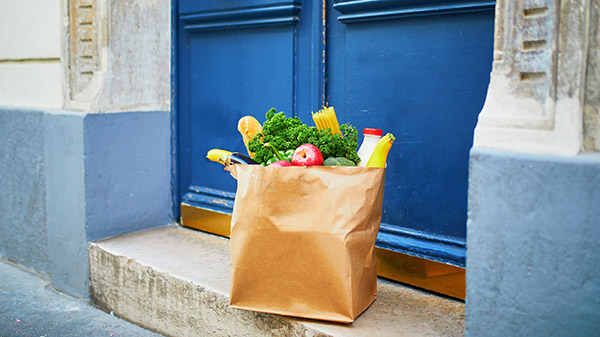
Roll A Pineapple
China
Another Chinese tradition involves rolling a pineapple into your home from the moment you enter it. It should be rolled in every room while chanting phrases of good fortune (in Mandarin naturally). And afterwards, you can make a nice fruit salad.
Bring Bread & Salt
Russia & Germany
A Jewish custom in Russia and Germany says bread and salt should be the first items in your new home. Bread to ensure you never experience hunger, salt to fill your life full of flavour. They’re often presented as gifts.
Holy Thread
Thailand
If you’re moving to a new home in Thailand, remember to invite an odd number (even numbers are unlucky) of Buddhist monks to perform a Khuan Ban Mai blessing ceremony. The monks tie a sai sin (holy thread) around the wrists of those moving in to bring them luck.
Hang the Chimney Hook
France
Pendaison de crémaillère, refers to ‘hanging of the chimney hook’. Dating from the medieval period, when a house was built, the last thing to be put in place was a hook in the chimney to hang cooking pots from. Once in place, a meal would be prepared to thank everyone who helped build the house. In France pendaison de crémaillère still means housewarming party.
Spill the Beans
Korea
In Korea red beans are spread throughout the new home to banish evil spirits and bring luck (red is considered a lucky colour in many parts of Asia).
Ring a Bell
Tibet
A Tibetan bell will help clear out stagnant or dying chi, allowing room for positive energy to flourish. But if you hear a soft ‘ding!’ it could just mean you’ve received a text message.
Bless This House
Italy
Religious ceremonies have been used in many cultures, in Italy the local priest would bless the new house with incense. He’d also hang around to enjoy a good meal afterwards.
Burn Sage
North America
Native Americans would burn sage to remove bad energy from their homes.
Right Foot First
India
In India new homeowners should step into their new property with their right foot first to bring good luck.

New Broom
England
Rather than bring their old broom, with its old dirt, old luck and maybe old spirits, a new home would always require a new broom.
Acorns
Germany & Scandinavia
Acorns were considered the best way to keep evil spirits away so windowsills would be lined with acorns. They would also be carved into doors and shutters. Gifts with acorn emblems are still given as housewarming gifts.
Can On A Hot Tin Roof
New Zealand
In New Zealand, once the new homeowners have settled in and night has fallen, friends and family throw tin cans onto the roof to scare away evil spirits (and probably frighten the life out of sleeping neighbours!). They’re then welcomed inside for a housewarming.
Bury Coins
Philippines
In the Philippines coins are buried in the foundations of a new home, or if moving into an existing building, scattered on the doorstep to bring prosperity.

Rice & Easy
India
Rice features in a number of new house traditions. In India milk and rice are heated in a pot until the pot overflows to symbolise an abundance of wealth and happiness.
China
The Chinese carry uncooked rice inside to bring about prosperity.
Italy
But in Italy, bringing uncooked rice into the house brings about fertility. So if you look at your children and think, “We already have too many of these!” it might be best to give the rice a miss.
Plant a Pomegranite
India, China, Persia
Pomegranates are another food associated with fertility and trees would be planted outside new homes of couples wishing to have a family.
Spread Salt
Unknown
Spreading salt in a room features in a number of different cultures. Salt is sprinkled on the floors of the new home and is left overnight to ward off evil spirits then swept up the next day.
Ready to start planning your move? Get a free quote.
Housewarming
Northern Europe
It’s not just another excuse for a knees up (although it is a good reason to have a party). The tradition of housewarming comes from lighting fires in a home that might have been left empty and cold. Also candles would be carried from room to room to frighten away evil spirits.
Opening A Bottle Of Wine
Your New Home
Open a bottle of wine. This isn’t actually a tradition at all but if you’ve just spent the entire day moving house, we think you deserve a nice, chilled glass of wine. Good work and cheers!
A HUGE thank you to everyone that has helped donate aid for our Ukrainian Appeal. So far your incredible generosity has meant we’ve sent 15 pallets of aid (clothes, food, toys, toiletries, bedding, shoes), amassing over 7 tonnes of much needed support to displaced people arriving in Poland.
We received the following letter from Sofia, who made the difficult journey from Ukraine.
I would like to express my gratitude for the entire indescribable support that we are receiving from you.
It is difficult to express in words how crucial your help is. I’m a mother of a 5-year-old daughter, which whom I have stood for almost 24 hours on the Ukrainian-Polish border crossing during the first day of the war. There were a lot of people standing there with me, and fear was all that could be sensed in the air. Standing there I knew that a couple of kilometres ahead was my sister, on Polish side of the border, and that there was safety waiting for me.
However, many of the women that stood next to me with their children had no one waiting for them, they did not know where they would sleep or if they would have something to eat. They did not know if they would be able to wash their children. Sometimes the women did not have enough strength to carry their bags with them and would leave them on the pavement. Some of them only took very small bags with them as they had no time to pack themselves nor their children.
After a while a lot of people had nothing to drink, and some begun to lose consciousness. When the night has come, that is when we began fearing the most, as it was very cold, temperatures were falling below 0 degrees, and we were all still on the Ukrainian side of the border. The children were crying out of cold, tiredness and out of fear of not knowing what would happen to them. There were drones flying over us – now I think that they were belonging to the press or to the police, but then I was afraid of them, I was thinking only about possible provocations or bombardment.
When I crossed the border, I was very happy to see my sister waiting for me with hot tea, it was already after almost 24 hours that we managed to cross it. There was a lot of help waiting for everyone that was crossing. I knew that now, thanks to the good people that were helping, Irina, who was crossing the border with her newborn child next to me, will now have somewhere to sleep as well as food to eat.
At that moment I was calm as I knew that all women crossing the border will receive help. Your hearts are enormous, thank you very much, each one of you.
Sofia Kobilnyk
Most of us are guilty of hanging on to things too long. Never is this more evident than when moving home. The last thing you want to do is increase packing (and moving costs) by taking ‘stuff’ with you that’ll simply clutter up your lovely new home. Our experts have some quick tips and hacks to help you say goodbye to clutter.
- Stop staring, start doing!
The hardest step is just getting started. “I’ll do it next Bank Holiday…”, “I just need a plan…”. “Maybe if I leave it long enough pixies will come and take it away for me?”. We all prevaricate but sometimes you just need to dive right in and get started or it’ll never happen.

- Is it useful or sentimental?
It’s natural to hold on to things of sentimental value. Sometimes we hold on too long, so ask yourself are you going to display it, use it, repair/upcycle, if the answer is ‘no’ then it’s probably time to let go.

- Don’t find excuses not to let go.
“But “XXX” gave me this…”, “But this reminds me of…”, “But what if one day…”. We all find reasons not to let go. Apply the rule above, sometimes, you’ve just got to let go to move on.
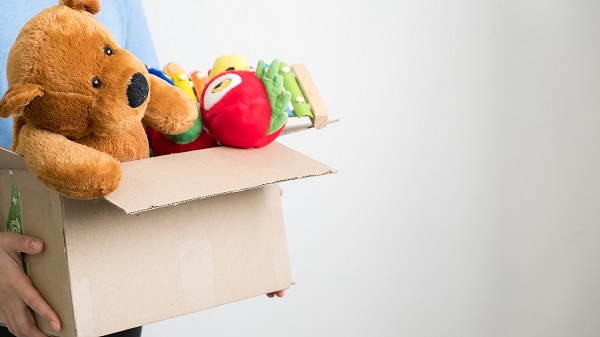
- Don’t dump it, store it.
Some items are too precious/useful to let go and that’s fine, you really might want them in the future. That’s what storage is for. It lets you keep what really is going to be of use again without reducing the size of your home but taking up useful living space.
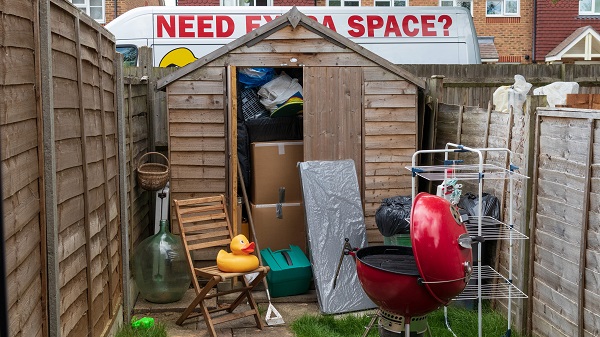
- Reduce now, replace later.
Some of that ‘stuff’ can probably be replaced with new items. It’s ok to let things go and enjoy the luxury of new and improved when the time comes.
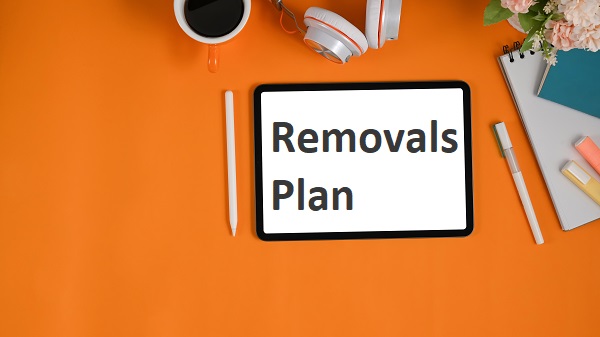
- One man’s junk…
Items not going into storage can still be valuable. Offering items on ebay, Freebay, Facebook Marketplace can give them a second lease of life without adding to landfill. You could even make a few pennies to redecorate that old dumping room.
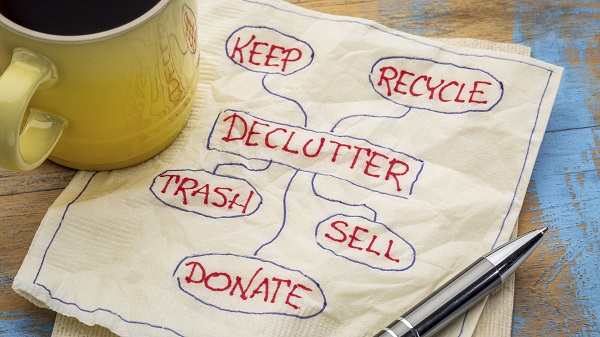
Get a free quote for your storage today.
- 90/90 Rule
Have you used that item in the last 90 days? Are you going to use it in the next 90 days? If the answer is ‘no’ then it’s time to let it go or store it elsewhere.

- You don’t wear it well.
Clothes and shoes can be a major cause of clutter. Simple test, if you haven’t worn something in the last year, there’s probably a reason. They can have a good life elsewhere with a new owner.

- Work room by room.
If you have multiple cluttered rooms or areas, don’t try and tackle them all at once. Simplify the task by doing one room at a time. As the various mountains get smaller, you’ll have a more manageable amount of items to make final decisions about.
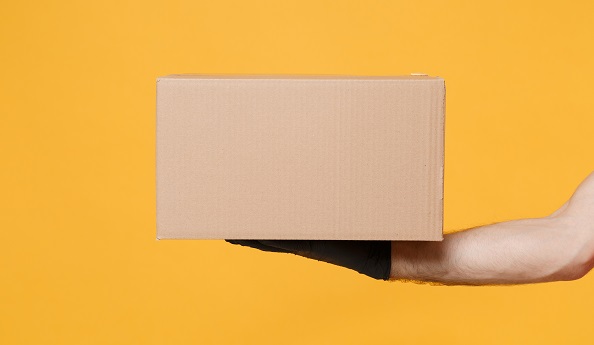
- Set easy goals.
Decide what the end result should be. Once decluttered you can redecorate or repurpose that reclaimed space by turning it into the studio/dressing room/home office you’ve always dreamed of.

- Do the rubbish bag dash.
Grab 5 rubbish bags. Your challenge is to fill those bags quickly with stuff you know needs to go. No pausing, make quick, simple decisions on stuff that you just don’t need. It can be easier than you think once you get started. That’s 5 bags done. Take a breather, have a well-earned cuppa then go for the next 5 bags. Look at you go!
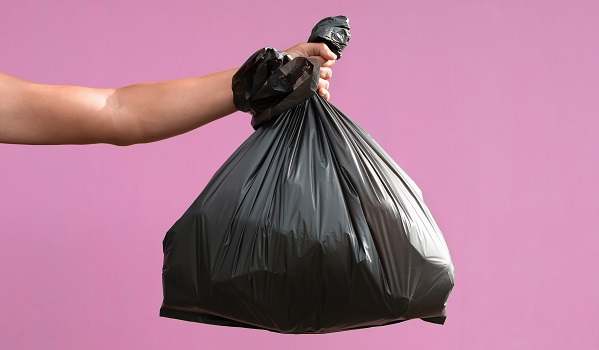
- 10, 10, 10
Another simple challenge to get you started. Chose 10 items to go, 10 items to donate, 10 items to keep.

- Take before and after photos.
To keep inspiring yourself for the next room and spaces to clear, take a before and after photo of the first room you declutter, so you can see just how great the difference is.
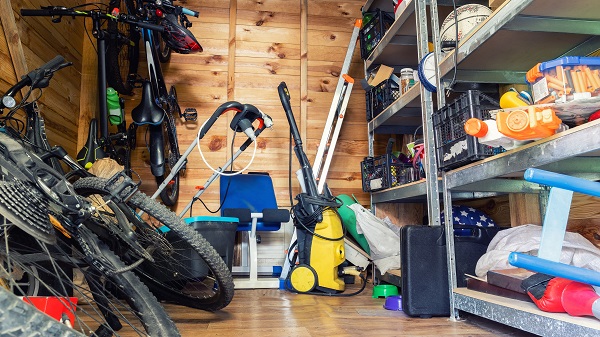
- Bring in reinforcements.
Get a friend to help. They don’t have the emotional attachment and can assist you in making clearer decisions about what you really do or don’t need to hold on to.
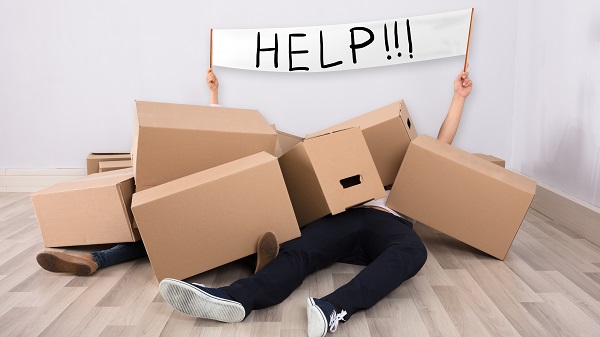
Got any clutter reducing tips? We love hearing great hacks and ideas and will add any great ideas to the blog for other people to read and use. You can send your hacks and tricks to info@armishaws.com.
According to polls and studies, moving house is one of the top 5 most stressful life events. And this stress is usually months in the making, with negotiating, endless paperwork, waiting on other people in your chain, packing and decluttering… Phew! It’s no wonder that by the time moving day comes around movers are already pretty frazzled. But although hectic, moving day is also very exciting and should be enjoyable.
By following some simple tips and avoiding potential pitfalls you can make the experience as smooth as possible and wave a cheery goodbye to moving house stress.
Before The Move
Make A Priority List
Putting it on paper, gets the worries out of your head and allows you to organise and prioritise. Once you can see what lays ahead, you can make notes and solutions beside each entry and start ticking off each job as you complete it.

Choose Your Moving Dates Early
Once you know the day it’s happening, that can reduce some of the uncertainty and anxiety, it gives you something to aim for (even if it does have to move slightly due to latter events). Try to avoid holidays and Bank holidays as these days are always very busy, putting a squeeze on the availability and prices of removers.
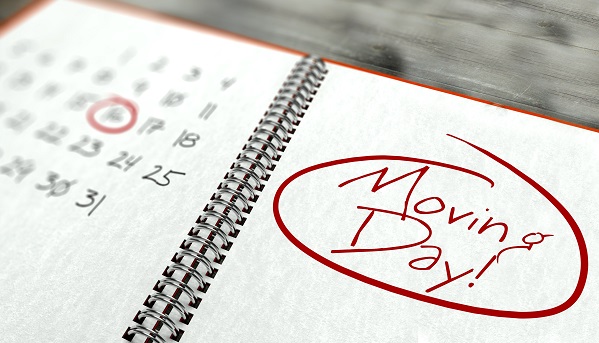
Book Time Off Work
That’s not just for moving day, book some time prior to your move to allow you to declutter, do little repairs, start packing. The more you can get done well in advance of the move, the more prepared and relaxed you’ll feel as moving day draws closer. It will also mean you have time to deal with any extra issues that crop up.

Declutter To Free Up Space
It’s amazing how beneficial decluttering can be for both your mind and your move. It doesn’t just empty loft spaces and overstuffed spare rooms/dumping grounds. It can actually feel like spring cleaning for the brain. Reducing the ‘junk’ you don’t want to take with you, or simply sorting it and packing things that are currently taking up more space than needed, will also make packing easier and cheaper.
You can read more here; 14 Tips To Declutter Before Your Move

Book Your Removals Company
Early birds catch the removal vans. Like many services there are peak times, some days of the week are busier and certain months are more popular for moving home. But those who leave it to the last minute will find they don’t get their first choice of company, end up paying more and certainly worry more. Avoid unnecessary panic. Companies like Armishaws allow you to pay a deposit to save your dates and offer flexibility should your dates suddenly change.

Ready to start planning your move? Get a free quote.
Get Packing Ahead Of Time
Try and you pack everything you can ahead of time. Here are a couple of tips on packing to help keep it simple and worry free:
- Start Early. The more you get done early, the more you’ll reduce last minute panic packing.
- Pack the least used/important pieces earlier on, and the most important last. This also means those items can be last on/first out at the other end.
- Put important documents together and label them clearly.
- Pack by room – this will help should you locate items and help your removal team.
- Label fragile items boldly – you’ll be calmer and your crew will be able to identify which packages need extra care.
- Label boxes on all sides and the top, colour coding them by room helps find/sort things at a glance.
- Ask your removers about their packing options and materials, good removers will take care of everything for you. Packing Services
- Make sure freezers are ready for the move by cleaning and defrosting well in advance.
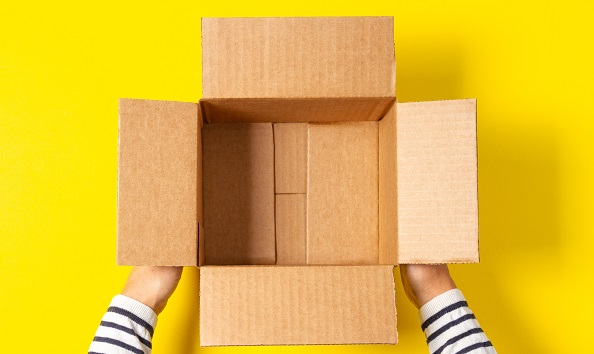
Do Your Homework
Redirect post, cancel suppliers/direct debits, make sure everyone who needs to know has been told you’re moving. Then think of your new home, setting up suppliers, arranging a food/grocery delivery to arrive the day after your move… Get all those little paperwork jobs added to your master list and get them ticked off well ahead of the day.

Check The Weather
Make sure you keep an eye on the weather in the week before your move in case you need to take extra precautions. Although obviously in Britain our weather is about as reliable as a sundial at midnight.

Moving Day
Have An Early Night
If you’ve planned all of the above well, then you shouldn’t need to stay up until daft o’clock the night before your move. Waking up tired could make you irritable which could set the tone for the day, so get your head down at a decent hour the night before the move.
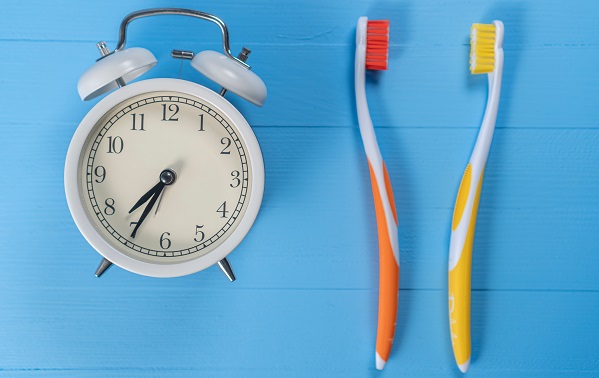
Ask For Help If Needed
Many hands make light work, so don’t be shy, pressgang friends and relatives in to help out on the day. The more help you have, the less pressure on yourself to get everything done single handed. Having relatives look after children for the day and keeping them occupied can be a HUGE way to reduce stress (“Are we there yet?”, “I’m hungry!”, “I need a wee.” “Jacob says he’s going to stuff me in a box!”).

Plan The Van Parking
Not all gardens and drives can accommodate a large removals van. That means they’ll be on the road, so make sure you’ve considered street parking. Officially you’re not allowed to place anything on a public highway (such as cones or wheelie) when trying to reserve parking. You can politely ask neighbours or put up polite signs asking people to leave space. Any potential parking or access issues should be communicated with your removers in advance.

Make Sure You Eat
It is very easy to get carried away and forget to look after yourself on moving day, make sure you have a break! Lower blood sugar will mean energy levels will start to flag and make you ‘hangry’. And no matter how strong your removals team is and how little lifting you plan on doing, it will still be a physical do, toing and froing, answering questions in one area of the house before being called to the garden… Have
food handy to keep you going (high energy foods such as bananas, are a good idea) and pack more food than you expect to need in case of delays.

Clean As You Go
It’s a lot easier to clean an empty house, if you can get into your property before the movers arrive this is an ideal opportunity. It gives you a chance to assess the state of the property before everything starts happening. This is your chance to check everything over and make sure no rubbish or mess has been left, and gives you a chance to sort it. There are also those that like to clean their old home before you go. This is a lovely gesture but if you do find yourself tight for time on the day, remember you’re not obliged to clean. Making sure you and your family get settled into the new house should be your priority and there’s no reason to feel guilty about that.

Unpack The Essentials First
The first thing to reach for when unpacking is the essential items. You need somewhere to sleep, the means to make a drink, functional heating, light bulbs and window coverings. So just give yourself a quick arrival shortlist;
- Sleeping
- Drinking/eating
- Warmth/lighting
- Privacy
After these essentials, any other packing should be seen as a bonus. You have plenty of time (years ahead!) to make your mark and start dressing your new home. A well earned take away is a far better reward for everyone on moving day than hanging a few pictures. The other reason is that if you start unpacking other items and then find yourself getting tired before the beds have been put together, you’ll still have things to do. If you have the four essentials covered, you can collapse into bed any time you like.

If you have any particular moving day questions or concerns, want some quick advice or a free quote,
simply contact our friendly team and we’ll be happy to help.
New home, new you! A big house move can be life changing in many ways. It’s certainly a time many people look at the way they’re living and make positive changes (“I’m going to eat more healthily.”, “I’m going to start jogging.”, “I’m going to cure my Netflix addiction!”). Many of us strive to ensure the way we live has less impact on the world around us and moving home is the ideal time to turn over a new, greener leaf. But before you get there, here are some easy ways to make moving home gentler on the environment.
Use Recycled Boxes
Lots of shops and companies pay for used boxes to be taken away. Rather than buy purpose made new boxes, look for somewhere willing to give you boxes for free. Sites like Facebook Marketplace often have listings of people giving away moving boxes after their move.

Opt For Recyclable Materials
If you are buying boxes, make sure they are made from recycled cardboard and that they can be recycled after your move. Avoid using plastic fastening tape as this can mean the boxes can’t be recycled, also most plastic tape can’t be recycled once removed from the boxes.

Acid Free Paper
Yes, many paper manufacturers use bleaches and acids in the production of paper. This is not only bad for the environment, it can be harmful to your items. Recycled, acid-free paper is better for wrapping breakable items.
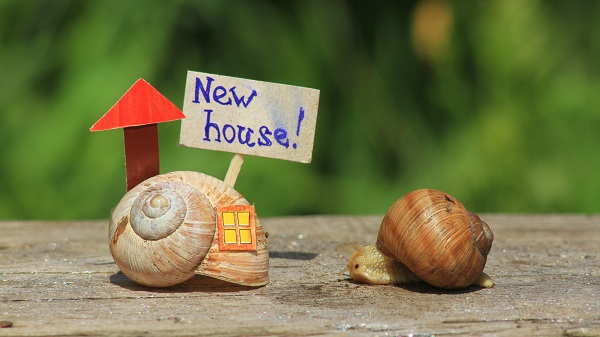
Say ‘No’ To Plastic Bubble Wrap
Another easy thing to avoid is plastic bubble wrap. There are now non-plastic alternatives easily available to buy. You can say no to bubble wrap altogether by using smarter packing tricks.

Smarter Packing Tricks
Wrap fragile items in towels, sheets and soft fabrics. You’ll need to pack fabric items anyway so this is a handy space saving hack. You can also ask family and friends for unwanted fabric such as old clothes, sheets, etc and cut them up into smaller pieces to wrap items. Once your move is complete you can list them for free to other house movers or take the used material pieces to a recycling centre where they’ll be transformed into new fabrics and greener products.
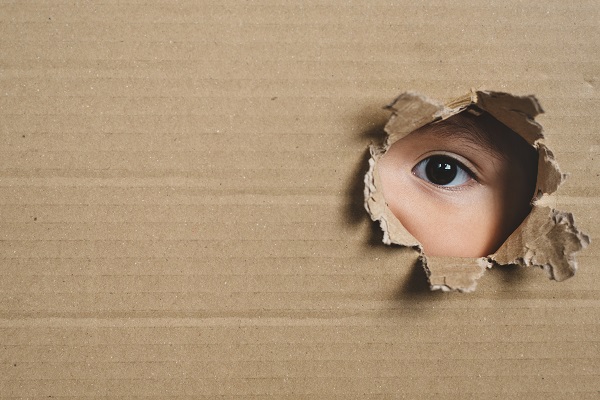
Use A Greener Removal Company
Not all removals companies share your environmental ethos. When choosing your movers, ask them about their green credentials. At Armishaws we’re proud to be market leaders in eco moving. As well as a host of greener working practises we have started a tree planting program close to our Somerset HQ. We’re not merely paying for trees, we’ve bought the land and are planting the trees ourselves. We’re committed to protecting both the trees and creating vital habitat for plants and animals.
You can read more about our Armishaws Eco Pledge here…

Ready to start planning your move? Get a free quote.
Avoid Food Waste
Ahead of your move, start planning meals and rather than restocking, using what you already have in the cupboards and freezer to avoid food waste. As the move date draws closer, stick to buying fresh foods, this will also reduce waste and packaging.

Buy Natural Cleaning Products
When cleaning your old home before you go and new home as you arrive, use eco-friendly cleaning products. There’s now a huge range of environmentally sound cleaning products, some can be a little more expensive but shops like refill stores have some budget friendly options.
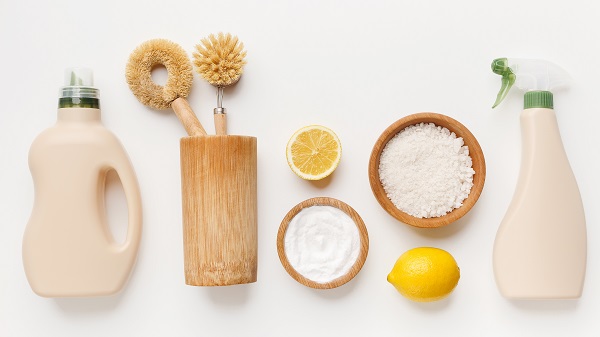
Start New Greener Household Habits
Once you’re in your new home, start as you mean to go on by switching to greener products (like cleaning fluids, etc). It really is the perfect time to start afresh and became a more environmentally aware household. You can also switch to green energy suppliers, start composting, growing your own veg and a whole host of positive changes.

Upcycle Old Furniture
If you have old furniture you don’t want to take with you or just want a new look for your new home, then upcycling furniture is a great option. There are plenty of chalk-based paints and products to transform furniture. The internet is a mine of furniture upcycling ideas and “How to…” videos. If you don’t fancy giving it a go yourself, there are groups up and down the country that accept furniture to train youngsters and special students to give furniture a new look and second lease of life. Some groups sell their new creations to make money for good causes or fund their students. Win/win!

Don’t Give In To Landfill
Most items can be given a second life. Old toys, crockery, bikes, electrical goods, that can all be reused or upcycled (there are companies that will strip electrical items of useable materials). If you’re letting things go, you can add a free listing on sites like; Freebay, Gumtree, Facebook Marketplace. Some items could go to charity shops, clothes and blankets can go to homeless shelters and there are charities that will take furniture, bikes, toys that run free shops for people and families in need.

Check Your Traders
If you’re employing a local trader to dispose of unwanted items when eco moving, check their credentials. Sadly, there are unscrupulous people that will take your money, take your unwanted items and rather than dispose of them properly, they’ll find somewhere to fly tip. Not only can this come back and haunt you (your items could be traced back to you and you’ll face a fine), but it’s costly to clear up and incredibly damaging for the environment. Check their waste license and make sure it’s legit (this can be checked online).

Got any green moving tips you think we should know? We’re always keen to hear from others that share our green ethos and have new, exciting eco-solutions. If you do have some handy eco-hacks, tips, tricks or have questions about your house move then get in touch.
If you want more house moving hints and ideas, our blog is written with the help of our house moving experts and a great free resource we’re happy for you to use which will hopefully help take away some of the worries and hassles often associated with relocating.
Moving house is stressful enough for humans, but if you don’t understand the move at all and would rather be chasing balls, sleeping by the fire and barking at next doors cat, moving day can be unsettling. You can reduce their stress by following a few simple tips.
Pack your pet’s favourite things last.
There’s always the list of things that can’t be packed until the morning of the move; toothbrushes, phone chargers, etc. Make sure your pet’s most treasured items (food bowls, bedding, toys, etc) are also left until later. Your pet needs to feel secure and surrounded by familiarity for as long as possible, to shorten any period of turmoil.

Car comfort.
Think carefully about how to get your pet to your new home. If your new home isn’t too far away, you can drive them yourself or take a taxi; cats will need to be kept in a carrier for the journey, and dogs should be in a dog cage or secured by a harness.
If you’re travelling further afield, be sure to make regular stops to offer your pet water and toilet breaks. For longer journeys, it may be a good idea to place your cat carrier within a larger dog crate containing a litter box and space for water for use during these breaks. Most dogs will also need to be given a chance to stretch their legs.
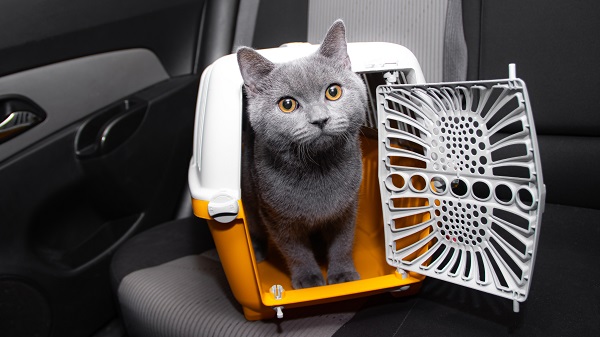
Carry blankets and covers.
For longer journeys, it’s a good idea to make the car a little more comfortable for larger animals like dogs and cats. Also blankets or coverings can be used to make cages or tanks dark for animals likely to be upset by light and motion.

Ready to start planning your move? Get a free quote.
Have distraction techniques.
For most animals, distraction principally boils down to food. As they say, give a cat a fish and you’ll feed him for a day, teach a cat to fish and he won’t bother because he’s lazy! But make sure you’re armed with rewards, treats, travel water bowls, tinned or dried food for mealtimes (if your journey is likely to still be happening at their usual feeding time), toys and familiar/favourite items.
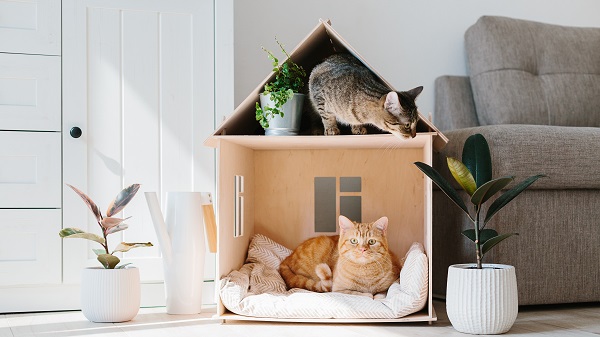
Update your pet’s details.
Once the move is complete, don’t forget to update your pet’s details. Pet passports and microchip IDs will need to be updated with your new address and you should ensure that your pet is registered with a local vet as soon as possible.
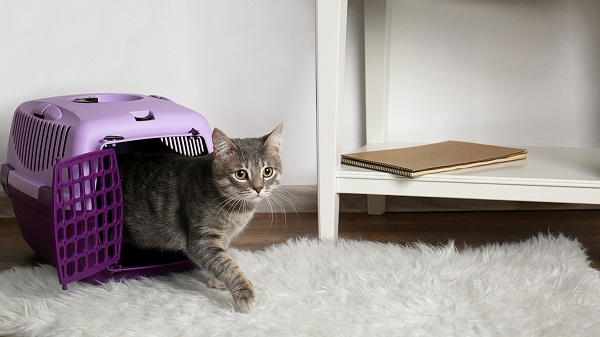
Don’t clean or replace bedding.
One temptation is to get your dog/cat a nice new bed for their new home but resist (defer) that urge for now. Smells are hugely important. Familiar smells, like their bedding, will reassure your pet that it’s in a safe space. So, avoid buying all new bedding or washing existing bedding ready for the move. Keep the familiar smells, you can soon wash or replace their old bedding once they’re settled.

Plan rest points for your route.
For long journeys, map out rest points along the way for animals that need exercise or aren’t used being used to confined small spaces. Letting animals out at motorway service stations obviously has serious safety issues, as well as being loud and potentially traumatising. Check your route in advance and look for handy stopping points just off the main route, where it’ll be quieter and safer to give your furry friends a comfort break and a run if needed.

Create a safe, quiet space.
When you get to your new home, unpacking your pet’s prized possessions should be one of your top priorities. The most important thing is to find a safe space for your pet to explore or place cages, tanks away from all the noise of moving and where they won’t get knocked. Find a room empty of boxes. unpack your pet’s bedding, food and toys, secure all windows and other possible escape routes and let them settle but make sure you pop in so they know they haven’t been left.
Don’t let your pet out of their carrier or cage until the door to the room is closed. You may want to make a sign for the door to ensure that your movers don’t accidentally open the door to your pet’s ‘safe space’.
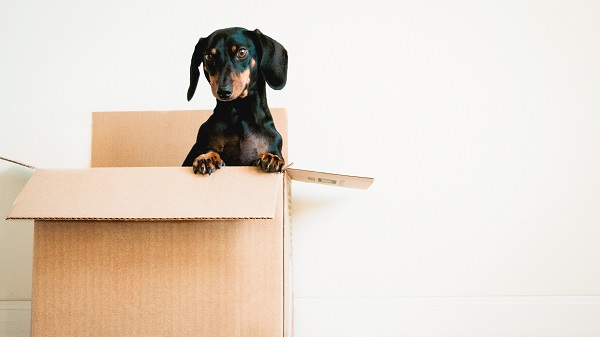
Check boundaries are secure.
Before you let your dog, cat, tortoise or alligator loose in the garden, make sure you’ve checked all the boundaries are secure. Your new neighbour possibly won’t want your pet entering their garden unannounced and you certainly don’t want them to be able to get out and onto unfamiliar/busy roads, but any animals will feel compelled to mark their new territory.
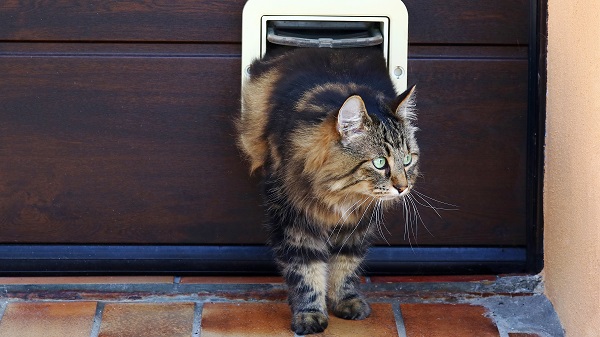
- Congratulations! You’re on the move. Moving home is a really exciting time… Right up until you suddenly start thinking just how much there is to do!! But don’t panic, at Armishaws we’ve been helping people move since 1973 and our teams have plenty of packing tricks to get prepared ahead of moving day.
Here’s our top 11 tips to help you begin packing for your big move.
Prepare A Safe Place
“Now where did I put that…?” The last thing you need is to be hunting for that document/passport/important address in a house rapidly filling with packed boxes. So before you do anything, set aside a safe place where you can place a box/document folder that won’t get moved when all the other boxes are being shifted from room to room. Then when you do need an important piece of paper, you won’t spend hours searching every box.

Declutter To Reduce Items
There’s no point taking things you don’t need/want at your new home (you’d be amazed how many people pack up and move things they no longer want!). Moving home is the perfect time to clear out unwanted items. Prepare to be a bit ruthless, but also be green. One man’s junk is another man’s treasure, rather than let things go to landfill, there are lots of more environmentally friendly alternatives. You could make money on unwanted stuff or let someone else give it a second life by selling or giving them away on websites like; Freebay, Facebook Marketplace and Gumtree.

Pack Early, Panic Less
Packing can seem a little daunting, also there is a thought that you don’t want to pack too early in case you need things. But the earlier you start the better. Have decluttered, you’ll now have an idea of what’s left and what rarely gets used (but you still need). The more you can get done early on the better, then once the move is finalised, you won’t find yourself running short of time and packing badly in a rush.

Least Used Items First
Start with the least used things. Loft spaces, outbuildings, winter/summer wardrobes, spare bedrooms… Make a quick shortlist of stuff that you can happily temporarily live without ahead of the move and get it packed.
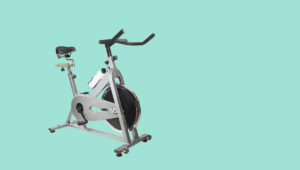
Consider Shapes & Weight
Some items are really easy to pack because of their shape. Books, CDs, DVDs, boxed collectables, etc. You’re not going to read every book or play every album between now and moving day, so get them boxed. Not only are they easy to do, they tend to be heavier boxes so should be at the bottom of any pile.

Don’t Over Pack Boxes
Remember that every box will need to be moved. Possibly by you. Even if you have a removal team on the day, you will probably find yourself having to move boxes between rooms as you pack so don’t overdo the weight.

Don’t Under Pack Boxes
Don’t leave empty space at the top of boxes. When you come to stack them you could find that area crumples which can lead to items getting damaged as the boxes lose their structural integrity. Worse still you could find yourself under a box avalanche! Use blankets, sheets, towels or paper to fill boxes to the top.

Ready to start planning your move? Get a free quote.
Size Matters So Box Clever
Pack light items in large boxes and heavy items in small boxes and try not to cram too many items into a box, it’s safer and easier to have more light boxes, than less boxes that are incredibly heavy. By keeping your boxes within a reasonable weight range, you won’t injure yourself or find boxes splitting. Safer for you and your items.

Leave Fragile Items Until Last
This means there’s less time for those boxes to get knocked and that they’ll go at the top of any piles. It also means you’ll have practised your packing skills on less fragile items before you tackle delicate or breakable pieces.
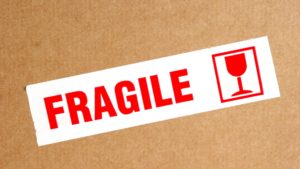
Call In The Pros
If you’re worried about packing, simply don’t have the time (or inclination), call in the experts! Our teams are trained to pack fragile belongings with care, using recyclable cartons and materials. Our vehicles are fully equipped with purpose made protective covers for dining tables, soft furnishings and white goods. We can supply heavy duty bed and mattress protector bags. Packing services can range from entire contents to just your fragile items, so if there is one area you don’t want to tackle, let Armishaws do the hard work for you.
Plan Your Food Shopping
It’s so easy to overlook food. Plan ahead, rather than re-stocking, start using remaining food to avoid having to take it with you. Top Tip; do a grocery shop online arranging delivery at your new address the day after you move in, so you can at least have the basics at your new address, giving you one less thing to worry about or squeeze into an already busy week.

Environmental Packing Tips
Boxes and packing materials are easy to buy, some companies can deliver. Our teams only use recycled and recyclable materials, such as a non-plastic alternative to bubble wrap. We always urge people to use environmentally friendly materials, reuse old boxes, many companies pay for boxes to be disposed of and are happy to give away boxes to people moving home.
After your move you can recycle boxes by offering them to others or taking them to a recycling centre. Armishaws offer a free cardboard box recycling service to help reduce waste and give our movers one less thing to worry about, so they can concentrate on turning their new house into a home.

Moving house can be stressful time with so many plates to spin (and pack!), so food shopping and planning might not be at the top of your to do list.
Apart from perhaps boxing up the slow cooker (last used two winters ago) and dusting off the cake mixer (you only think of when watching Bake Off), and clearing out that corner cupboard no one looks in, most of us leave the packing the kitchen until the last minute. But that can bring its own headaches (and stomach rumbles).
In the run up to your you can by simply planning meals, shopping wisely and inspecting the cupboards (“There’s a Marathon bar in here! They don’t even make those anymore!!”) you can reduce food waste and the amount of heavy food you have to take with you.
Avoiding food waste is also better for the environment. You can also donate to food banks. Less for you, more for someone else who might need a helping hand. Win/win!
14 Tips to Avoid Food Waste When Moving Home
Plan Pre-move Food Shopping
Once your removal company is booked take a good look in your cupboards, fridge and freezer so you know exactly what you have left and plan what needs eating. Although taking your cupboard essentials with you is a possibility, eating up what you have could save you some time with one or two less boxes to pack and un-pack at the other end.

Get Creative With Leftover Food
Set your own Masterchef challenge with perishables goods in advance of the big moving day. It’s a fun way to try new (experimental?) dishes of your own concoction. Get the children making pizzas with those tins of tomatoes, or baking cakes to use up open packets. Moving can be stressful time for them too and having some fun activities in the lead up can really help!
As the big day approaches, start to limit the food that you buy and avoid putting long lasting products in your basket.

Only Buy the Essentials
Cut down on the big food shops prior to moving day and stick to the essentials. If you’re uber organised you can create a meal planner and only buy things you need to create those meals that also use up existing food in the cupboards.

Buy Fresh Food Before Move Day
Avoid buying frozen food, tins, packets where possible and switch to only buying fresh foods. It’s not only good to help reduce food waste and avoid over stocking ahead of the move, it’s also healthy.

Start Making Packed Lunches
Be a legend in your own lunchtime. If you usually pop out at lunch to buy food, switch to preparing a lunch to help empty the cupboards, use up overlooked food (I remember that cous cous!) and save some cash. Easy to make meals like pasta bakes and soups can use up lots of ingredients that are quick to create and easy to reheat at work.
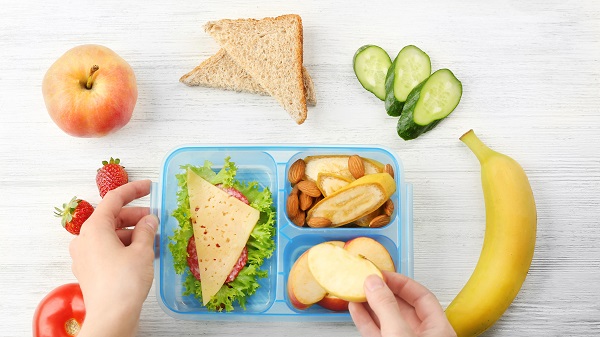
Donate To A Food Bank
If you’re clearly going to have food left you know you won’t be able to consume and don’t want to take it with you, donate to a local food bank. Many small shops and supermarkets have areas to donate food for people in need. Make sure to check items you can’t donate. And don’t forget to check the expiry date in case that packet of Hobnobs have been around longer than you think!
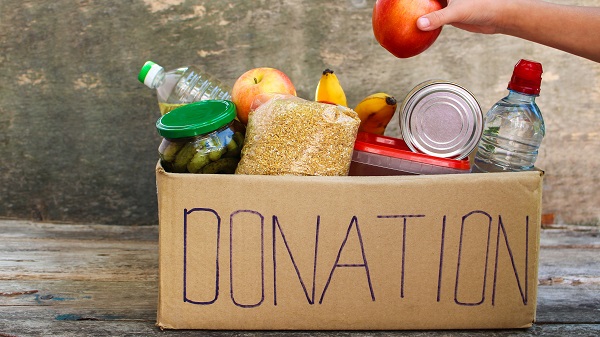
Have Your Own Great Bake Off!
Eat your heart out Paul Hollywood! Literally!! Those packets of pink icing, flour, cake decorations, marzipan, hundreds and thousands of opened packets you really don’t want to be packing and taking with you. Get baking and treat everyone in the office to a cake day. You’ll be the toast of the HR department. You could even charge for cakes and donate the proceeds to charity.

Ready to start planning your move? Get a free quote.
Make Munchies For Moving Day
Moving home is hungry work, so if you have things left in the kitchen the day before you move then prepare food to keep you going. Whether it’s a quick meal that you can eat hot or cold or a number of high energy snacks, making sure that you have food to hand can only be a good thing. Particularly if you have kids moving with you (especially teenagers!). Make sure that they have plenty of treats to keep them happy. It will not only offer a few minutes peace, it can reduce cranky, hungry, hangry youngsters. And don’t forget drinks.

Try A Little Tin-derness
Tin food can be bulky and heavy. It also keeps for ages, so check the dates, work out what you really need kept handy (pet food, family favourites and regular items) and get the rest boxed up and out the way. This will free up space for getting to grips with the rest of the food cupboards.
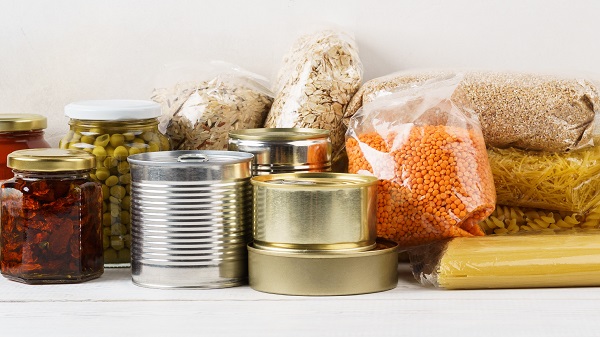
Have A Date Night
Take an evening to check the dates on all the food in your cupboards. Yep, when was the last time you did that?!? People are often surprised at just how long some food has been lurking, hidden behind the peppercorns (unopened) and dried lemongrass (ditto). The worst offenders are spices. That time you were going to start cooking curries from scratch (you never did and that was 7 years ago!), the spice rack that was a wedding present and has never spiced up the marriage dinner plates. Those emergency tins of soup you bought when you were nearly snowed in (2014!!). Check dates and either bin it or send it to a museum!

Prudent Packing Preparations
Ah yes, the three Ps; Prudent Packing Preparation. The last thing you want to find as you’re unpacking is spilled food, opened jars, Marmite covered everything! While packing sauces, packets, jars and bottles take an extra second to check the lids are secured properly. Also, if you’re packing your boxes yourselves, make sure you reduce room for movement and wrap all breakable food containers. Shield glass containers with extra padding and look for anything that could go pop (home-made drinks, fizzy bottles, squeezy containers).

Don’t Forget The Drinks Cabinet!
Ah yes, limoncello, Sorrento 2002, the ouzo someone brought you back from Greece (still unopened), that mulled wine you bought one December and have forgotten about every Christmas since. So much booze, so few parties. Well there’s no time like the present! Give your old home a proper send off and have a party to help say goodbye to all those spirits in great spirit. It’s also a nice way to raise a glass to your neighbours.

Moving Day Fish & Chips
Ah yes, the nation’s favourite, fish and chips! It’s a moving staple, a great way to say hello to your new home and have an easy tasty meal on moving day once the removal team have gone (seriously, make sure they’ve left the premises, our crews can smell a large cod, chips and battered saveloy from 100 yards!).
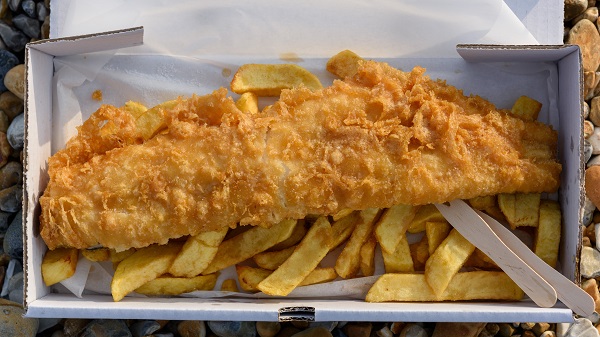
Book A Food Shop Delivery
Ok, you’ve done the good bit, you’ve reduced the cupboards this end, donated to food banks, fattened colleagues with cakes, got all the neighbours tipsy (“Sarah from across the road was doing karaoke… With the microwave!!”) but what are you going to eat week one in your new home?!?
Get organised in advance and book a food shop of essentials to arrive the first full day in your new home. It not only means you can feed everyone, but you can also get some of those other ‘must-have’s’ delivered (loo roll, hand soap, washing up liquid, etc) that you might not want to pack up and bring with you.
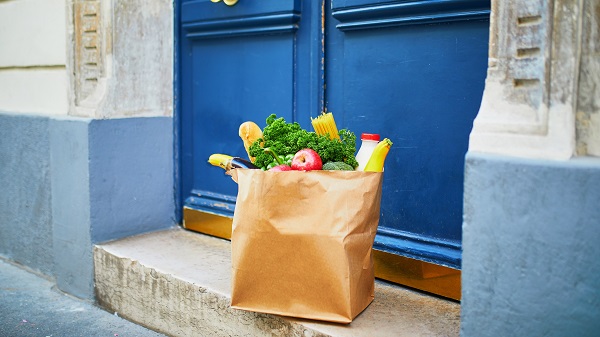
Armishaws have helped hundreds of families move across the UK, Europe and beyond and have a wealth of moving tips and handy hints. Check out our other blogs or contact feel free to email us any quick house move queries. We’re happy to help.
If you would like to chat to a member of our friendly team and discuss your move, then get in touch today. We understand that no two moves are the same and can help design a removal quote that is right for you.
Or we can just swap recipes!
Advice For Rainy Removals
We always advise clients to be prepared. After months of foreboding weather reports warning that your moving month will bring storms and pestilence! Suddenly the forecast is looking brighter but as any Wimbledon fan knows, the British weather has a habit of misbehaving.
So having a ‘wet-weather plan’ ready is no bad thing. To help you get prepared, here are some handy tips to help deal a rainy relocation.
Seal Boxes
Double check the seals on boxes to ensure the flaps are secured with no gaps for rain to get into. Yes, that seems obvious but is overlooked surprisingly often. Also have cleaning products to hand. Even with the most diligent removal crew, the chances are there will be drips and splashes inside your home, so keeping a mop and vacuum cleaner handy could prove useful.
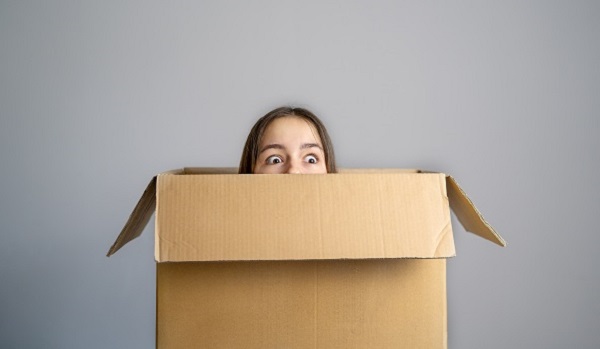
Stronger Cartons
In damper weather, old boxes will suffer worse. If you’re expecting rain, use new boxes where possible, they’ll be stronger and more rain resistant. Your boxes can still be reused and all cardboard should always be recycled (Armishaws use only recycled and recyclable cardboard wherever possible).
Mark Special Items
If there are some items that are more at risk should they get wet, make sure they’re clearly marked and discuss these with your removals team.
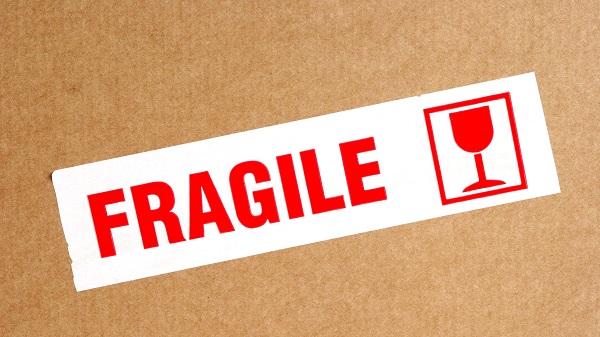
Protect Wood/Electronics
Wood that might mark and electrical goods should be completely covered. A good removals crew will know how to get the job done quickly and efficiently. Most companies offer full packing services, this will allow the pros to take care of the fiddly protective measures so you can relax.
Cover Floors
At Armishaws our trained crews can provide floor coverings and it’s certainly something we recommend. Cardboard boxes or plyboard can create an interior runway although they should be securely fastened together so there are no trip hazards. If you use boxes they should be clean and any printing placed facing up, away from flooring and carpets. To be doubly sure, use plastic sheeting under your makeshift walkway.
Plastic Sheeting
Available from DIY shops or even pound stores, plastic decorating sheets can provide an extra layer of protection. They tend to not be very robust and won’t stand up to a few trips of heavy boots, so should only be used as a secondary layer under something more durable.
Buy Bin Bags
Larger wheelie bin sized bin bags are conveniently large enough that they will slip over most boxes and wardrobe cartons without having to cut them. Don’t just leave them in place once they are in the van, they will drip water creating a wet floor, soaking the bottom of the boxes. Instead, place them over a box to carry it to the van, once in the van, remove the bag and take it back to cover the next box/item. Keeping the bags in one piece also means they can be reused (for your new bins) to prevent unnecessary waste.
Tarpaulins
Tarpaulins can provide quick, short-term protection if you have to place items outside for a short time. They won’t protect against really heavy downpours, but they can help keep the worst off in lighter rain. Make sure they are secured in place if covering items, or if you’re using them as temporary ground cover, ensure they are securely anchored and don’t create a trip hazard.
Check Your Route
It’s likely you might not be hugely familiar with the route to your new home. So check ahead, use a route finder app or map to look at your route. Check for any areas that might be liable to flooding (roads running close to rivers, low bridges where water might gather, etc) and have a ‘Route B’ as back up. Your removals team probably know a number of potential routes, so it’s a good idea to consult with them to make sure everyone is on the same page/map.
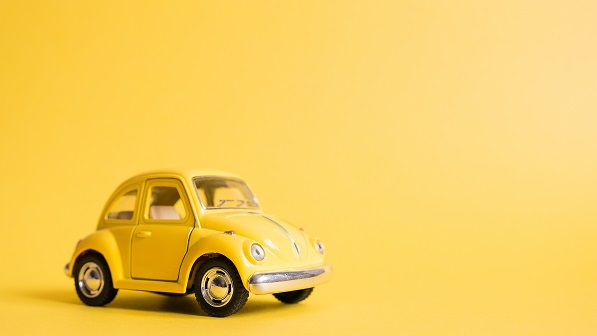
Tents & Marquees
Pop-up marquees can offer extra protection on the day so if you don’t own one but have a friend, relative or neighbour that could lend you one for the day it could help (it should be firmly anchored in place).
Use A Garage As A Staging Area
Moving items into a garage for easier access can reduce the number of wet boots entering the house. You can have an indoor team and outdoor team working in relay so those ‘wearing the rain’ don’t bring it inside.
Get Your Moving Vans Closer
To reduce the distance and amount of time items and boxes might be exposed to the rain, get your removals vans as close to the property as possible.
Don’t Drive On Grass
Even if you’re keen to get vehicles as close as possible, avoid driving on grass. Heavier vehicles will inevitably damage lawns, and in the worse-case scenario where there is particularly soft ground, they could get bogged down.
Cover Wet Ground
Plyboard, cardboard boxes, old carpet are all ideal to cover wet or muddy ground. If your removal team are likely to be crossing outdoor areas that are muddy or grassy, laying down a protective layer can keep the worst of the mud at bay. But if the day is likely to be windy, make sure to secure your temporary walkway in place using something like tent pegs.
Do not use scaffold boards. It’s something we see from time to time but scaffold planks are thin and can be wobbly, they’re certainly not suitable for heavy guys carrying even heavier boxes and furniture.
Wet Weather Clothes
In your rush to get everything packed, removal day arrives and… “Where did we put the wellies?!?” Make sure you have suitable wet weather gear to hand for everyone. It’s better to have it and not need it than realise it’s somewhere at the bottom of a huge pile of boxes (and you’re not even sure which box!).

Recycle & Reuse
Where possible, any items you use should ideally be reusable or be recycled. Moving home does have an environmental footprint which can be minimized with a little bit of planning. Our teams operate a box recycling scheme, use an eco-friendly alternative to bubble wrap, Armishaws are also planting sustainable woodland to offset carbon emissions and taking huge steps to ensure every move we undertake has as little impact on the environment as possible.
Don’t Forget The New House
Yep, you’ve managed to get everything out of your old house without too many boot prints or soggy cardboard. But don’t forget you’ve got to do it all again at the other end. If you can, take any floor coverings or protective measures with you to use at your new house.
Further Advice For Moving House In The Rain
In wet weather things will inevitably move slower and take longer. Crews might have to temporarily halt to avoid moving your items through the heaviest downpours, traffic is likely to be slower, wrapping furniture will need more attention. Plan ahead as much as possible to reduce the impact of the weather. Have floor coverings at the ready, communicate with your removals team, mark items that are more susceptible to bad weather. Rain is inconvenient but with simple steps and measures you can avoid major hold-ups.
If you are driving to your new property, your car will possibly be carrying more and therefore heavier than usual, drive accordingly, leave extra breaking space, drive slower on bends and roundabouts and avoid driving through standing water.
Patience is a virtue. Yes, moving home can be stressful but remember your moving team are on your side. They are experts at what they do and will want to get the job done as quickly and efficiently as possible. They want to do the best job for you, so work with them and take advice where offered.
Ready to start planning your move? Get a free quote.
Made that decision already and need help with packing or removals?
Click to view more information on our UK Removals page.
Moving abroad? We offer an overseas removals service too –
for more information click to view our European Removals or Overseas Removals pages.
With so much to do and arrange, it’s easy for some things to be forgotten. To prevent any last minute panics, here’s a complete, easy to follow new home checklist, covering everything you may need to consider/arrange before, on the day and after your move.
New Home Checklist
Before Moving In
Set Up Utilities
Shop around to find the best deals and arrange to have utilities connected for the day you are due to move in (in most cases this is done remotely and won’t require someone turning up on the day).
Broadband & TV
Similarly, make sure you have TV and broadband live on the day of moving in (especially if you have younger family members!).
Other Bills, Suppliers, Services
Council tax, home insurance, wood (for fuel burners), rubbish collection. If you prefer grocery delivers, you should also check which supermarkets deliver to your new address.
Change of Address
Ensure everyone that needs to be told has been updated. You can also set up a Royal Mail redirect service for a set period (3, 6 or 12 month options).
Schools
If you’re moving with children arrange to have their records transfered and order their new uniforms (most school websites give a list of local uniform suppliers).

First Shop
Book a shopping delivery of all the essentials to arrive the evening of your move or your first full day (don’t forget binbags and loo roll!).
Bulbs, Batteries & Curtains
Three things that are easily overlooked but often vitally important on your first evening. Some homeowners do take lightbulbs. Batteries may be required for smoke, carbon monoxide detectors. Even if they’re only temporary, make sure you have curtains (and a means of hanging them) for the first night.
Deep Clean
If time is on your side, arrange for a cleaning company to carry out a deep clean ahead of your items arriving at your new home.

New Home Checklist
On Moving Day
Garden Safety
Check your new garden is child/pet friendly and make sure any escape points have been secured.
Sweep For Forgotten Items
Check rooms, outbuildings, loft spaces for any items the previous residents might have left behind by mistake.
Metre Readings
Read utility metres and take photos of the readings.
Pet Safe Zone
Create a safe, quiet, room for your pets by placing their familiar smelling bedding, toys, food and water (don’t wash bedding before the move, familiar smells will help them feel safer in the new surroundings). Put a sign on the door so your removals team don’t enter by mistake.
Safe Item Space
Set aside a room/area for delicate/fragile items to be placed, safely away from potential knocks or bumps.
Assemble The Essentials
Assemble essential furniture such as beds, hang bedroom curtains and set-up a TV for the kids. It’s best to get it done sooner rather than later. After a long day, you don’t want to head to bed and find you haven’t built it yet!
New Home Checklist
After Your Move
Locate Shut Offs
Find where the water stopcock, gas supply valve and fuse board are. If you have tradesmen coming to fit appliances or carry out work, you’ll make their job easier (and your bill cheaper), if they don’t have to waste time looking for those important switches.
Test Smoke Detectors
Make sure any smoke detectors are working. If you don’t already have one, invest in a carbon monoxide detector.
Lock Out Remedy
Decide where/who your emergency spare key is going, so you have a solution in place before it happens.
Register Locally
If you haven’t already done so, get all your household registered locally with a new dentist, medical practice, vets, etc. Have your patient files/records forwarded to your surgery.
Ask Your Neighbours
There will no doubt be all kinds of local delivery services or interesting artisan suppliers tucked away. Your neighbours will be a great source of local tips and handy companies you might enjoy.

Ready to start planning your move? Get a free quote.
Made that decision already and need help with packing or removals?
Click to view more information on our UK Removals page.
Moving abroad? We offer an overseas removals service too –
for more information click to view our European Removals or Overseas Removals pages.
Moving day delays are often avoidable. Something has been forgotten, something packed that should have been kept handy, people aren’t properly prepared. If we had a pound for every time our crews had to sit, drinking tea, waiting for their homeowners finished getting things ready, we’d be able to afford all those cups of tea!
So here’s our easy moving day checklist to keep your move on track.
Moving Day Checklist
At Your Old Property
Dress For Action
At some point you will be getting hands on, whether that’s carrying every box or just tidying up. Wear older clothes you’re happy to get dirty and sturdy footwear.
Check Access
Clear over hanging branches or other obstacles that might make life difficult for the removal van/s. If the moving vehicles will be parking on the road, make sure there is adequate space outside your property (have a friendly word with the neighbours if needed).
Pet Safe Zone
Create a calm, safe space for pets by placing bedding, toys, food and water in a quieter room. Clearly mark the door so your removals team know not to enter.
Cover Floors
Use plyboard, or cardboard boxes (print side up) to protect floors from the many shoes that will be walking through. For extra protection use a layer of (clean) plastic sheeting underneath. Make sure it’s well anchored with no trip hazards.
Wet Weather Precautions
- On the day, make sure all the family have boots and coats handy (so don’t pack them too early!).
- If the ground needs protection, use plyboard or cardboard boxes to create a walkway. Do not use planks or scaffold boards, although strong they can move underfoot.
- If you can, borrow a pop-up tent or awning (that you won’t have to pack and take with you) as a makeshift command post-box depository for items you might need to keep out of the rain.
- Wheelie bin sized bin bags can be useful for covering boxes or wooden furniture on route to the van (make sure you reuse them in your bins to reduce waste).

Hot Weather Precautions
- Have a cool box handy with extra drinks.
- Keep sun cream, hats and sunglasses ready for younger movers.
- If you can, borrow a pop-up tent or awning to create some shade for delicate items and for your crew.
Keep Valuables Separate
Some removals companies won’t be covered for transporting expensive items like jewellery, cash, watches, stamps, etc, so these may need to travel with you. Ask your removals company in advance for exact details of what they can and can’t transport.
Print Paperwork
You might have them stored digitally but make sure you have a printout of all the essential paperwork to hand in case you lose your internet connection or your device’s battery fails.
Moving Day Survival Kit
Have a moving day survival kit ready containing; toys/food/drinks for pets or children, medication, phone charger, old keys, paperwork.
Pack A Moving In Bag
Prepare a bag with the essentials you’ll want when all the chaos has finally subsided, toothbrush, pyjamas, etc. That way you won’t be hunting for things at the end of what could be a very long day.

Metre Readings
Take final metre readings (and photographs).
Essential Tool Kit
Prepare a bag/box containing basic tools so they’ll be handy when you inevitably need them; knife, screwdrivers, allen/hex keys, packing tape, scissors and lightbulbs (in case they’ve been removed from the new property).
Look After Your Crew
Yes, they are paid to do an excellent job, but having some cold drinks or showing appreciation really can go a long way in ensuring your team go the extra mile (we mean work hard, not keep going past your address!).
Last Day Check
Check all windows are closed and locked and switch off water (stopcock), gas and electricity at the fuse box/mains.
Final Sweep
Do one final sweep of the entire property, including outbuildings, loft spaces, garages, before your removal van leaves in case something has been missed.
Removals Supervisor
If you’re leaving before your van/s, arrange for a friend/family member to stay behind to supervise the removals crew, to ensure nothing is missed and everything is locked up.
Moving Day Checklist
At Your New Property
Garden Safety
Ensure your new garden is pet/child friendly by securing any potential escape points before you let the little animals run free (and yes, as a family run company, we’re including children in that!).
Check For Forgotten Items
Inspect your new property for any items the previous occupants might have left behind by mistake. Set them aside for the owners to collect later.
Metre Readings
Read the utility metres and take photos for your new billing.
Pet Safe Zone
Set a room aside for your pet away from strangers, boots and noises. Place bedding, toys, food, water and items with familiar smells to keep your pet calm. Clearly mark the room so your removals men don’t enter.
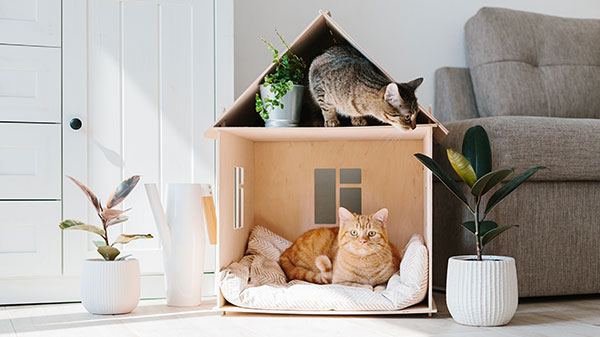
Safe Item Space
Set aside a room or space to place valuable or fragile items, away from the hubbub of the many items and boxes coming in.
Assemble The Essentials
Once your removal team has left, assemble essential items such as beds, bedroom curtains, dining table and set-up a TV to keep young movers entertained, they’ve had a long day too and will need some down-time. Our tip is to do it as soon as possible, you don’t have to reassemble your bed at the exact moment you really want to get in it.
Annnnnnnd breathe!
Congratulate yourselves on a job well done with wine, chocolate, a take-away or a lie down in a dark room!
Ready to start planning your move – get a fast, free quote.
Moving abroad? We can help – check out our European or International services.
To borrow the words of Robert Burns, “The best removals plans of mice and men often go awry”, (he was a very moving gent). You’ve happily marked all your boxes, stacked them in your new home, then as you start to unpack them in order, you realise all the labels are on the top, under other boxes and you can’t read them. “Doh!”
Yep, labelling boxes really does seem like a simple task but there are a few handy hints to make sure you get it right to make your move flow like the words of the afore mentioned Mr Burns.
Buy The Right Equipment
Start by purchasing some labelling equipment. Some large sticky-back labels and a thick black marker pen are a good starting point. If you want to be uber organised, use different coloured markers or card to colour code specific rooms. Having labels makes them easy to spot, rather than simply scribbling words in biro straight onto the cardboard – which can be hard to read (and it’s surprisingly tricky to write on a corrugated box).

Position Your Labels Strategically
Always stick your labels in roughly the same area on each box. This will make labels really easy to find. You should also place labels on the side of each box; when boxes are stacked on top of each other, you won’t be able to see labels placed on the tops.

Plan A System That Works
Although there are definitely wrong ways to label boxes, there are also various right ways. The key is to find the way that will work for you. Some people like to label by item, some label the item and room (always preferred by removal men as they can see exactly where it’s going at your new property). Some people like to have it colour coded, by either pen, sticker/label or even coloured tape. Whatever system you choose for labelling your boxes, keep it consistent e.g. don’t jump from colour coding to words, as it can get confusing to remember after several weeks of packing or confusing for anyone helping that doesn’t know your system/s.

Make Sure It’s Obvious
You can come up with a brilliantly complex but efficient system in your head. But if that stays in your head others might not follow your plan. Your labelling system should be easy to understand, so that anyone that picks up any box will know exactly what it is and where it’s going without having to cross reference your perfect spreadsheet and code of such ingenuity that Bletchley Park would be left scratching their heads and looking puzzled.

Prioritise Labels/Boxes
It’s also a good idea to add a mark or a sticker to those boxes that contain important, most needed items. Toiletries, loo roll, lightbulbs, curtains to cover children’s’ bedrooms, bedding, tea bags, mugs and of course the kettle! This will tell your removal company to keep these boxes at the top and safely placed in one space making sure they are first for you to find at your new home so that you can find them when needed.

Clearly Label Fragile Items
Finally, always make sure that your fragile items are clearly labelled. Any reputable removal company will take the utmost care of your possessions anyway, but labelling boxes that are fragile will help provide that extra bit of reassurance that your goods will all arrive completely undamaged and heavier items aren’t placed on top unknowingly.

Breaking valuable items and losing everyday possessions are among the things that worry us most about moving house. But, the good news is – along with hiring a top quality removals firm – you can take the stress out of moving by packing and labelling your boxes properly.
Those that forget or choose not to label their boxes while packing may find themselves surrounded by a sea of boxes and no idea where to start when they get to their new properties.. Imagine having to search through a mountain of cardboard cubes just to find the kettle. In short, labelling your boxes can save you a lot of aggravation when you get to the other side.
This will also help your removal company to unload your boxes into the right rooms, preventing your kitchen cutlery from ending up in your bedroom and your toiletries sitting in the living room. This will make things a lot easier for you when you start to unload your possessions – saving many unnecessary trips up and down the stairs.
Happy labelling!!
Let’s be honest, although many employees and clients don’t like change, it is a big advantage to help keep things fresh, and improve costings, space and efficiency. Many businesses would prefer to relocate to help save money and resources. But what can be done to make the move faster and easier?
Planning an office move from one site to another can seem a lot like moving to a new house. To reduce lost sleep and precious man hours you need to make sure everything is organised and planned. So here’s a few simple tricks to help reduce the impact for your staff, customers and productivity as our experts lift the lid (and several large boxes!) on how to make your business move more efficient with a simple office move checklist.
Starting Planning Early
Most people underestimate the time it takes to pack goods securely and safely, especially something with a large inventory like an office. Never wait until the last minute as the packing will be rushed, and items are more likely to be damaged. It is better to make sure that all of your items are wrapped up safely and securely, and that every item is accounted for (and well labelled!), rather than wait and pack so fast that you have to cut corners and do a bad job at bubble-wrapping your computers, or favourite mug.
Leave the vital elements (such as customer facing sales teams, vital IT systems, etc) until last so you can trade as usual for as long as possible.

Assign Storage Space For Your Move
Create a space where the elements of your business you can get packed and ready can be stacked ready for your removals team. You can then make steady progress in the run up to the big move and reduce the amount of items needing to be packed last minute.
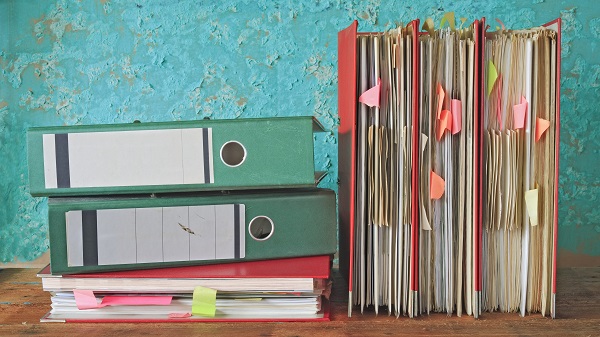
Arrange For Key Departments/Personnel To Work From Home
In recent times there has been a massive shift to people working from home. For some companies it was vital in order to keep operating during the Covid pandemic and subsequent lockdowns. There are online services that can reroute incoming calls to your teams’ mobile phones or landlines. Video conferencing can allow departments to communicate for meetings. The key is to work out what you need to ensure the least disruption for your customers (they’re the ones that pay the bills) so they are kept unaware of any chaos happening as you move lock, stock and HR department.
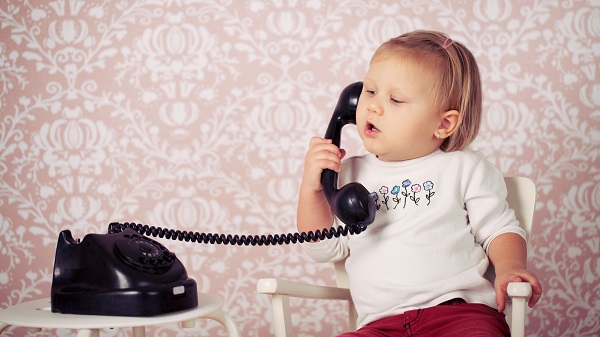
Print Box Labels For Staff To Fill In
If uninstructed every member of staff will have their own way to mark boxes (often badly) or worse still, not mark boxes at all. You’d be surprised how many companies overlook something that with hindsight seems obvious. Print out labels of exactly what a box contains and where it is to go at the other end. This will make life easier and quicker for your removal team and simpler to find what you need when unpacking. Be sure to mark all sides of the boxes as then if some are covered, it saves time picking up and moving other packages to try and find the details. It’s also good to number and print and inventory of exactly how many boxes should be where, then you can soon spot if a box is mossing or has been placed in the wrong location.

Pack Tech Separately
Computers should be wrapped separately in thick blankets or bubble wrap. Also, ensure all data and information is backed up, either online or on a physical drive, just in case a computer is lost or broken in transmission. With printers, remove the cartridges, tape down covers and follow specific instructions for moving machines since improper moving may void warranties. The more valuable the item, the more care you should take with it, and with computers, tablets, or technology that could easily break it’s best to take extra precautions. We recommend computers/tech, should be placed in their own separate box (one for each) and avoid placing items on top if possible.

Create Spreadsheets & Checklists
Checklists are a great way to avoid mistakes and be prepared for any eventuality. Think about an stacking/unpacking plan, for example; what needs to be opened first, putting heavy items at the bottom of piles with lighter on top to avoid damage, what will have to be set up first at the other end…. Although packing this way takes a little more time, unpacking will be quicker and a lot more efficient. It can take even more time sorting through boxes in no structured order. If you do label your boxes, then use a checklist to ensure you haven’t missed anything. A ‘Big Move Spreadsheet’ is a great way to create an inventory (for each room/office/department), set timelines, assign tasks, and create a running order for the day.

Call In The Experts
Yes, you could save time and money on your move by doing it yourself, but you could lose more of both through loss of productivity. An expert removals team will know exactly what needs to be done and in what order. While your company is unique to you, the logistical problems of planning an office move is something experienced removals crews will have seen before and a good team will help save you time and money.
- Shorter time spent pack and loading.
- Know exactly what to load where for easier unpacking and setting up.
- Know how to pack items to prevent/reduce potential damage and breakages.
- Do all the legwork, do you really want Duncan in accounts risking his bad back?
- Navigate any problems or unexpected issues.
At Armishaws our experienced, trained crews really have been there, done that and wear uniformed T-shirts (plus photo ID). They’re all background checked and experts at what they do. We’ve moved porcelain manufacturers, shops, IT companies, even homes and private offices at Kensington Palace. Send us a quick enquiry for a free survey.

Be Prepared That There Will Be Issues
“The best laid moving plans of mice and men…” Even the most meticulous planning can hit snags but it’s important to not get annoyed at every little thing that goes wrong. Listen to your removals team, they might not know your business, but they do know removals and how to avoid issues before they occur. Give them as much information as possible about access, parking, fragile items, etc. You should also look at insurance coverage for your belongings. Whether you’re overseeing the entire move, or just packing away your items, it is important to not let it get the better of you. Be organised, keep to your plan, and if anything changes or doesn’t go your way, then just take things one step at a time, and you’ll find seemingly big problems are simpler and easier to overcome than you think.

Make The Most Of Your Move
It’s a great marketing opportunity so have a press announcement ready for local and trade press to get some free advertising. Invite valued customers, suppliers, contacts, press to an opening ‘do’. It’s a good way to meet face to face, renew and strengthen relationships and wow people with your new improved premises. Use social media to spread the word, send out a newsletter, temporarily change your email footer… It’s a big deal, you don’t get many chances to shout about the inner workings of your company so plan ahead to make the most of this big, exciting event.

Thank Your Staff
Studies show that staff who feel part of a team and appreciated achieve better results. Moving is a big upheaval for them too. It’s interrupted their work, altered their commute, changed their daily status quo (“My new desk isn’t as close to the window/coffee machine/pot plant!”). A little thank you can go a long way.

To summarise our
Office Move Checklist
- Start planning early.
- Allocate storage space for the move.
- Plan for key staff to work from home.
- Print box labels for staff to fill in.
- Pack tech separately.
- Create a task checklist.
- Get a professional removals company.
- Be prepared, there will be problems (so don’t panic!).
- Tell your customers, use it as a marketing tool.
- Remember to thank your staff.









